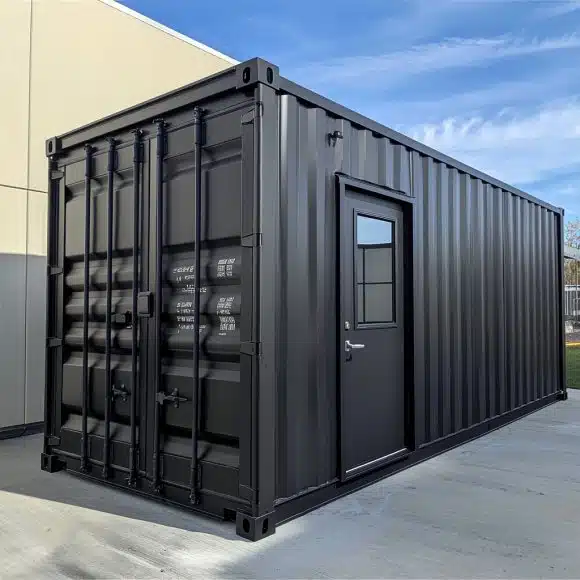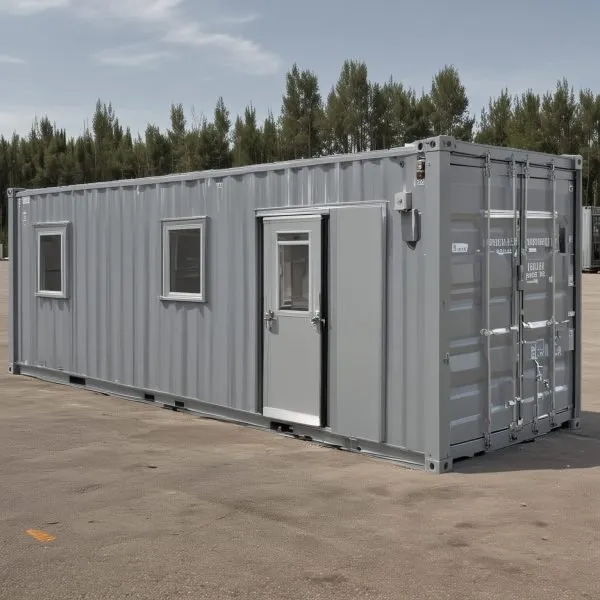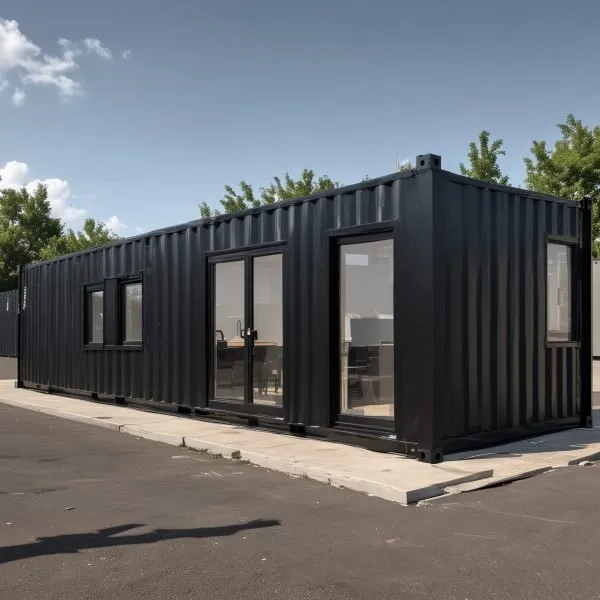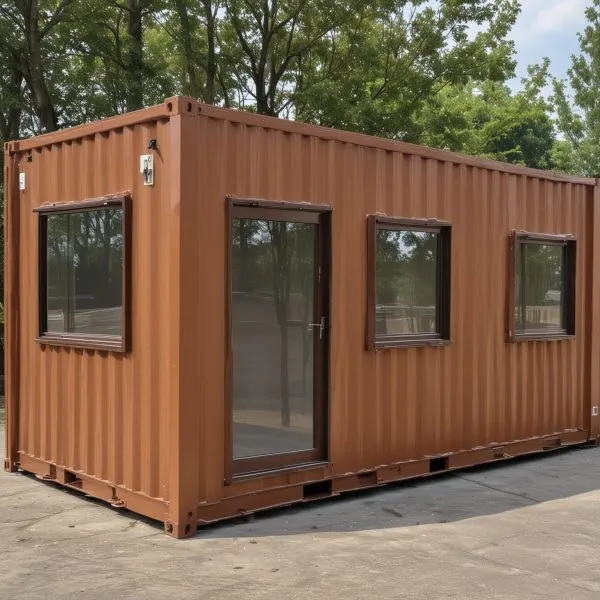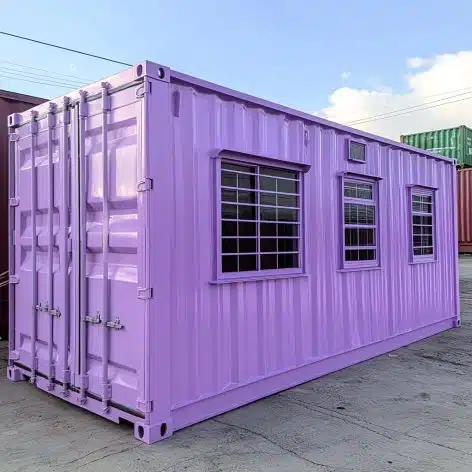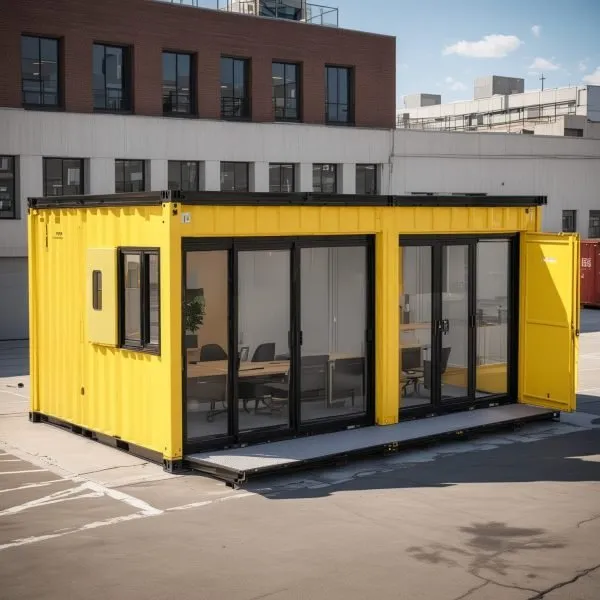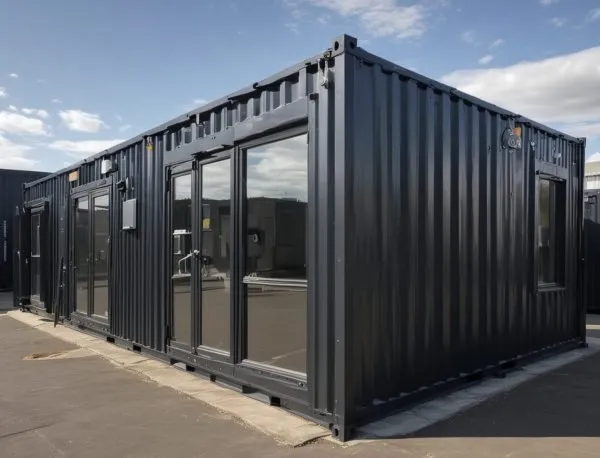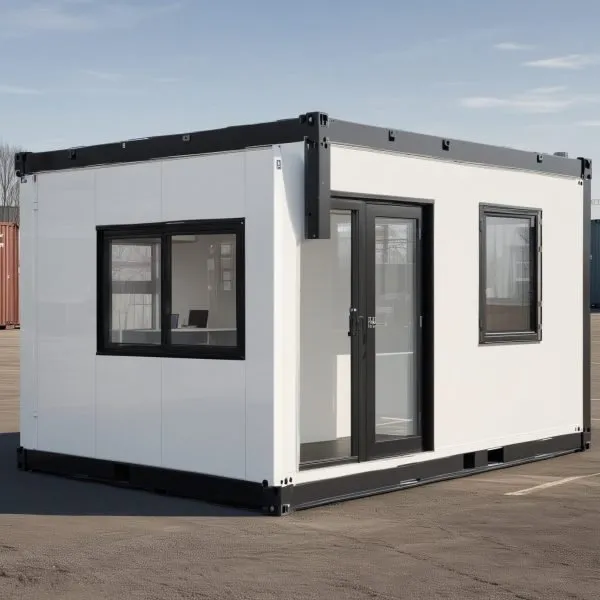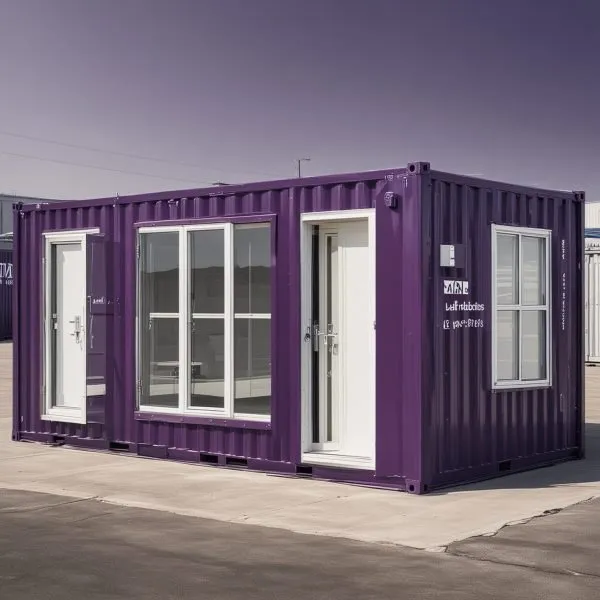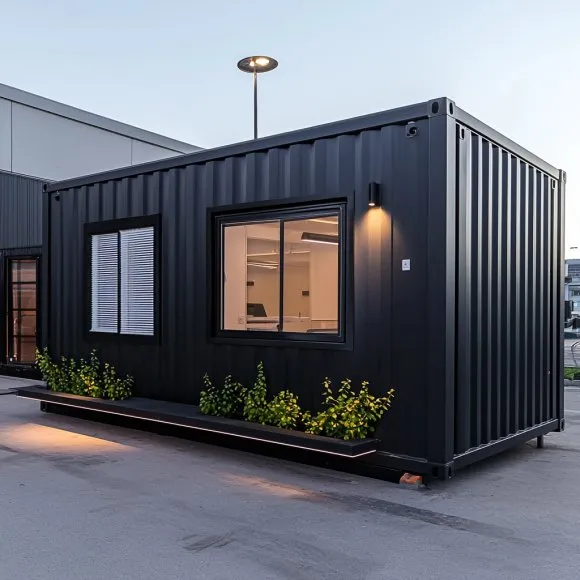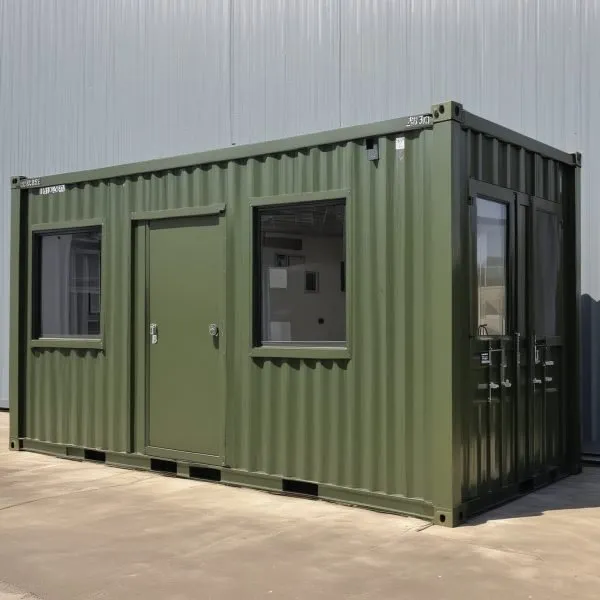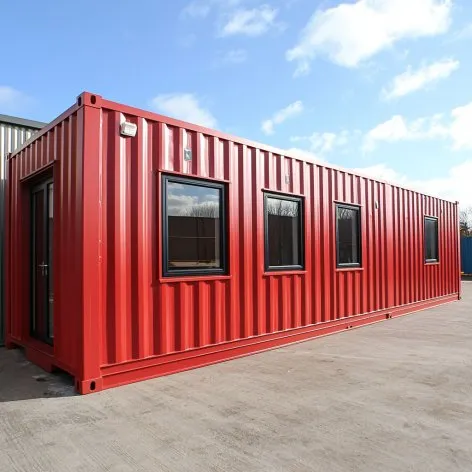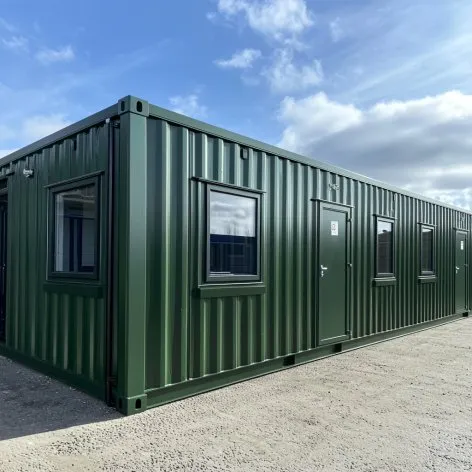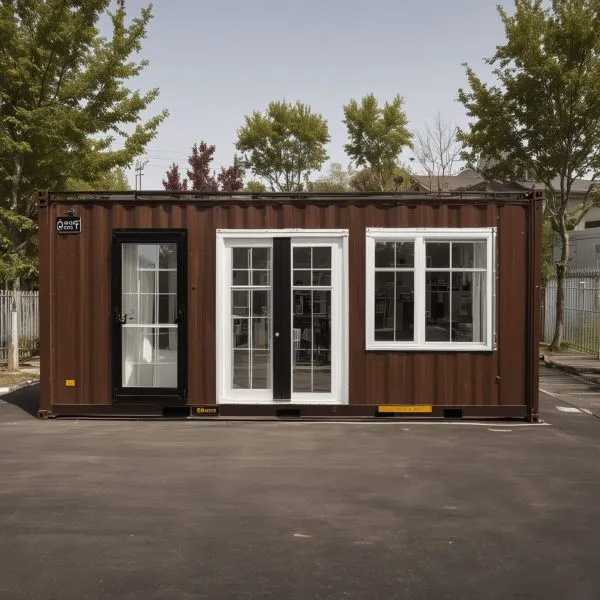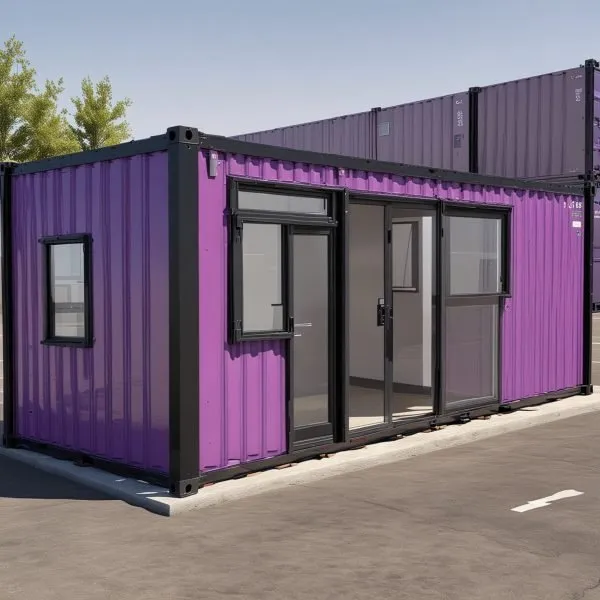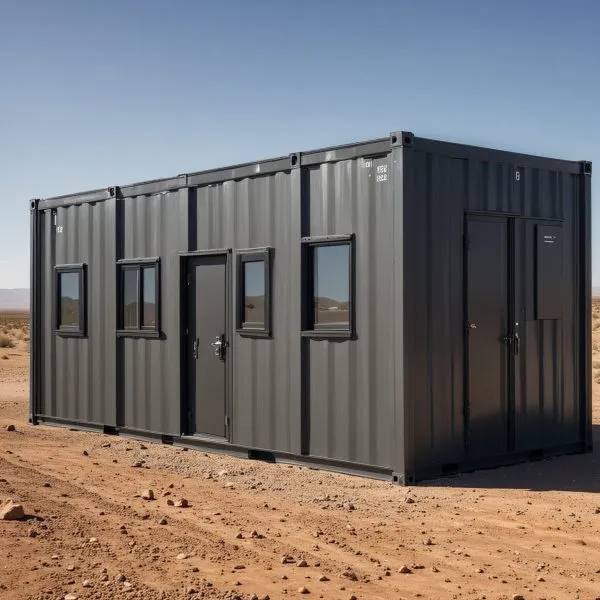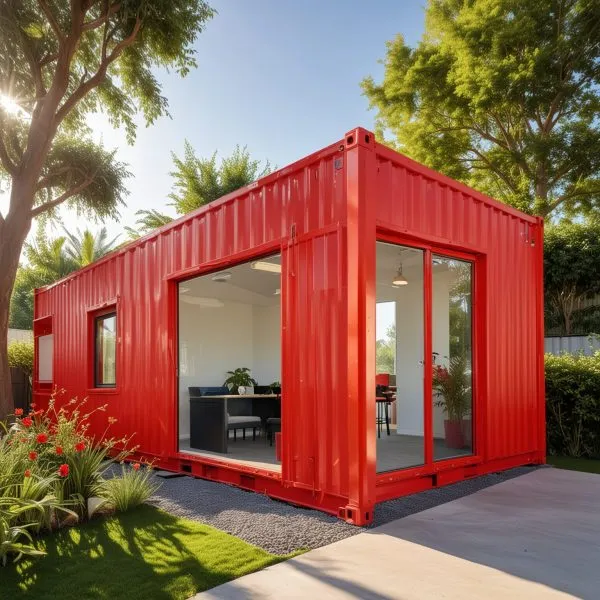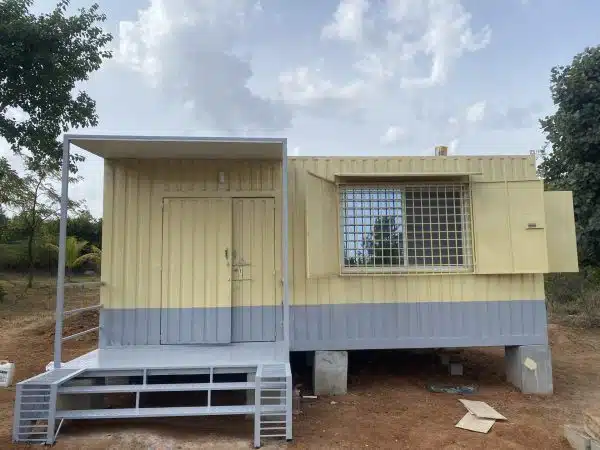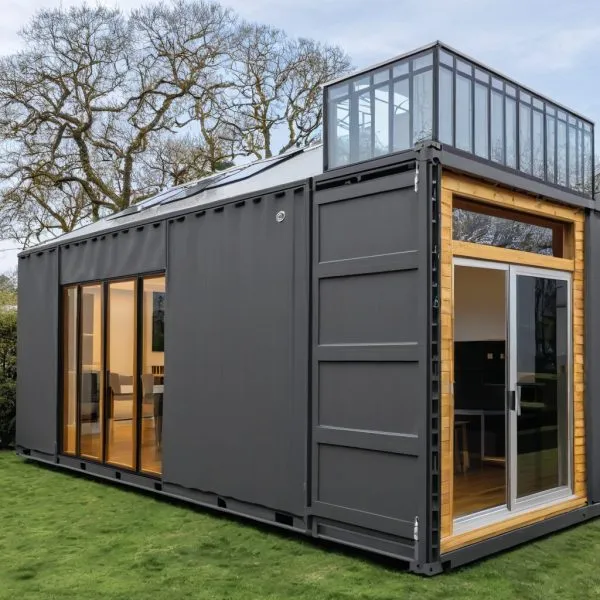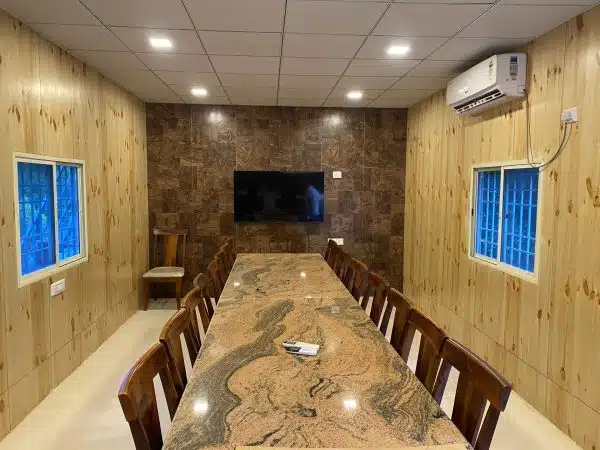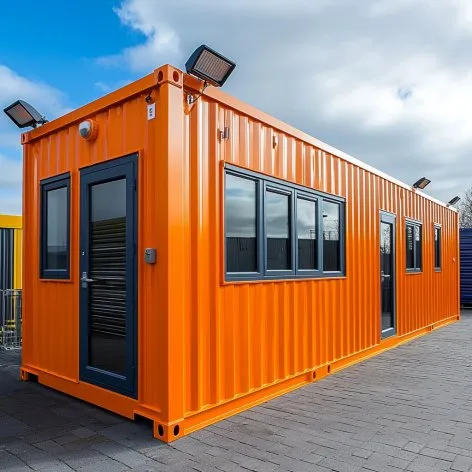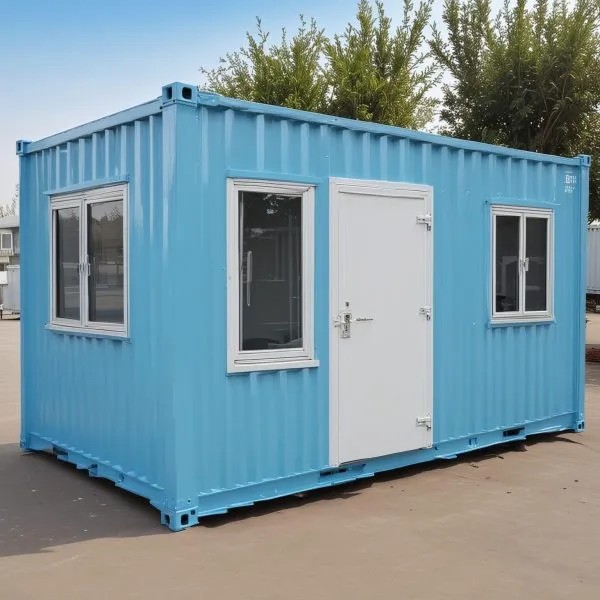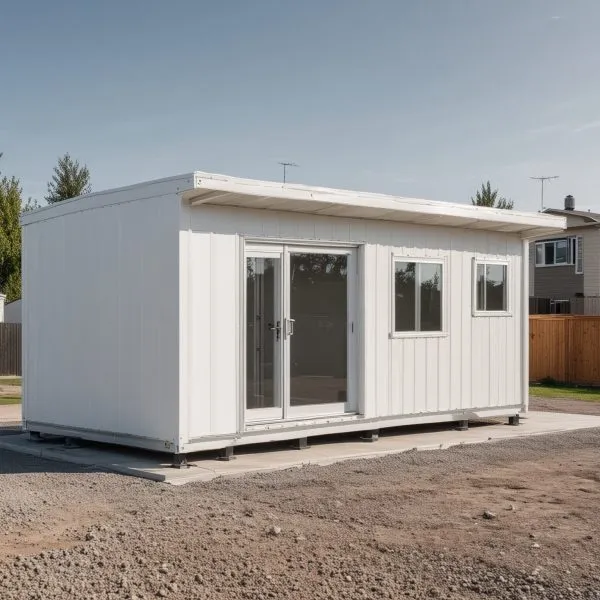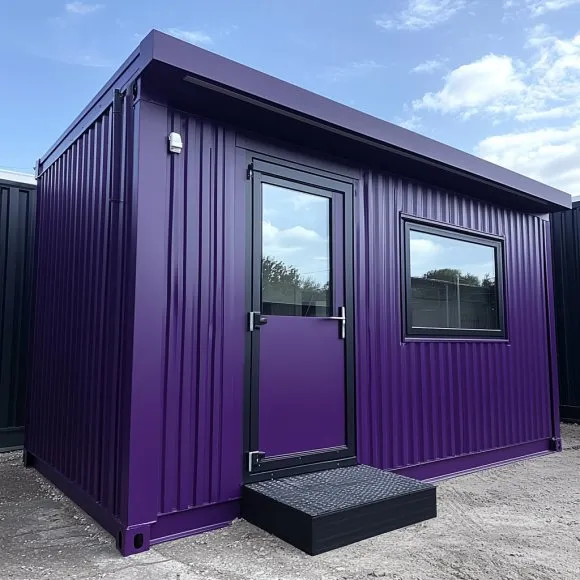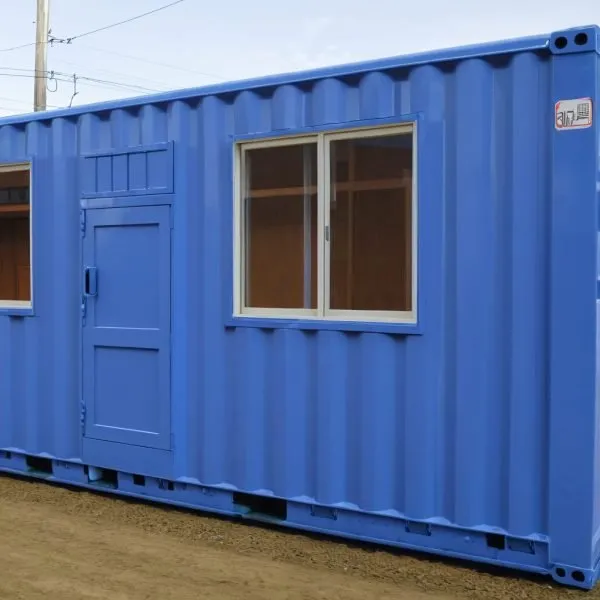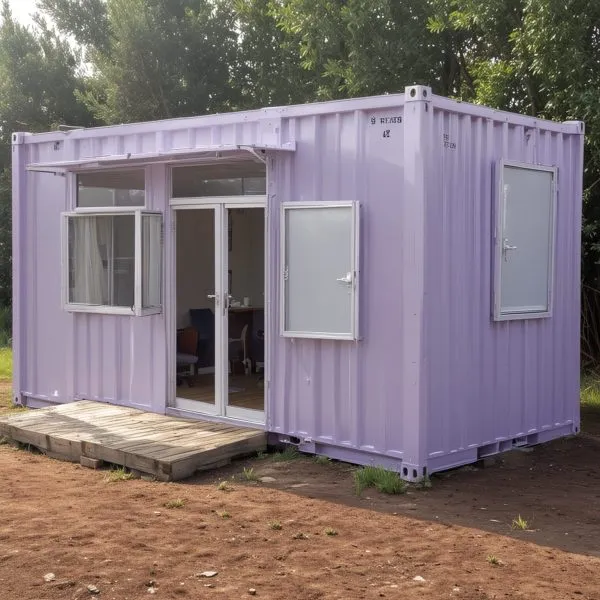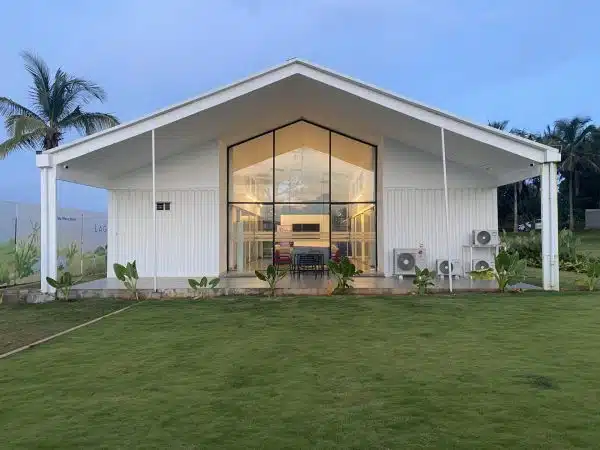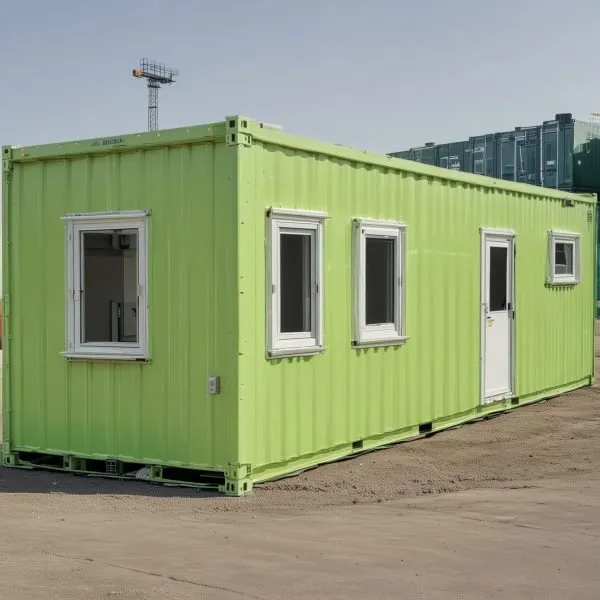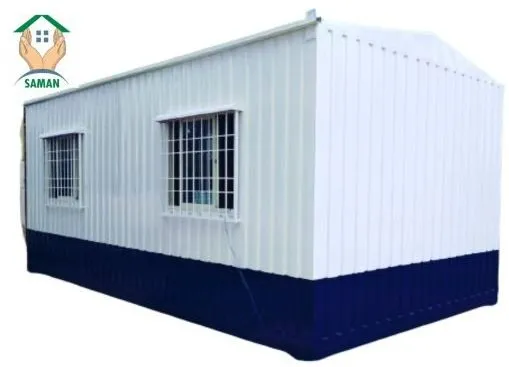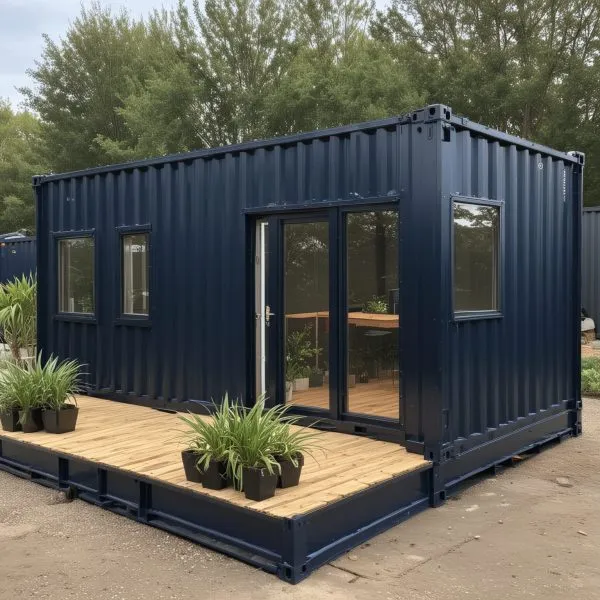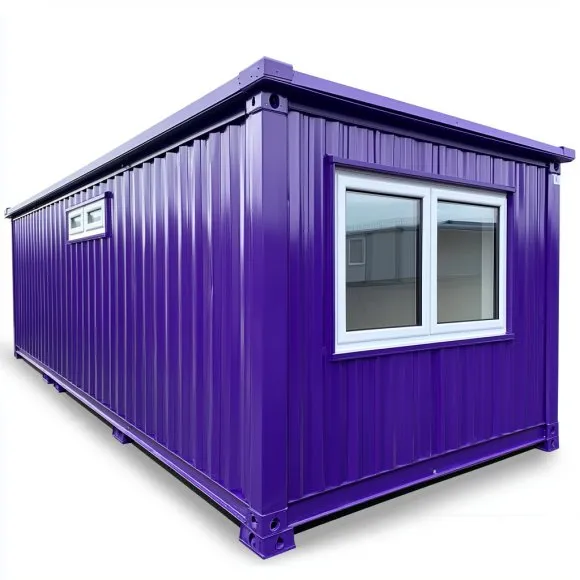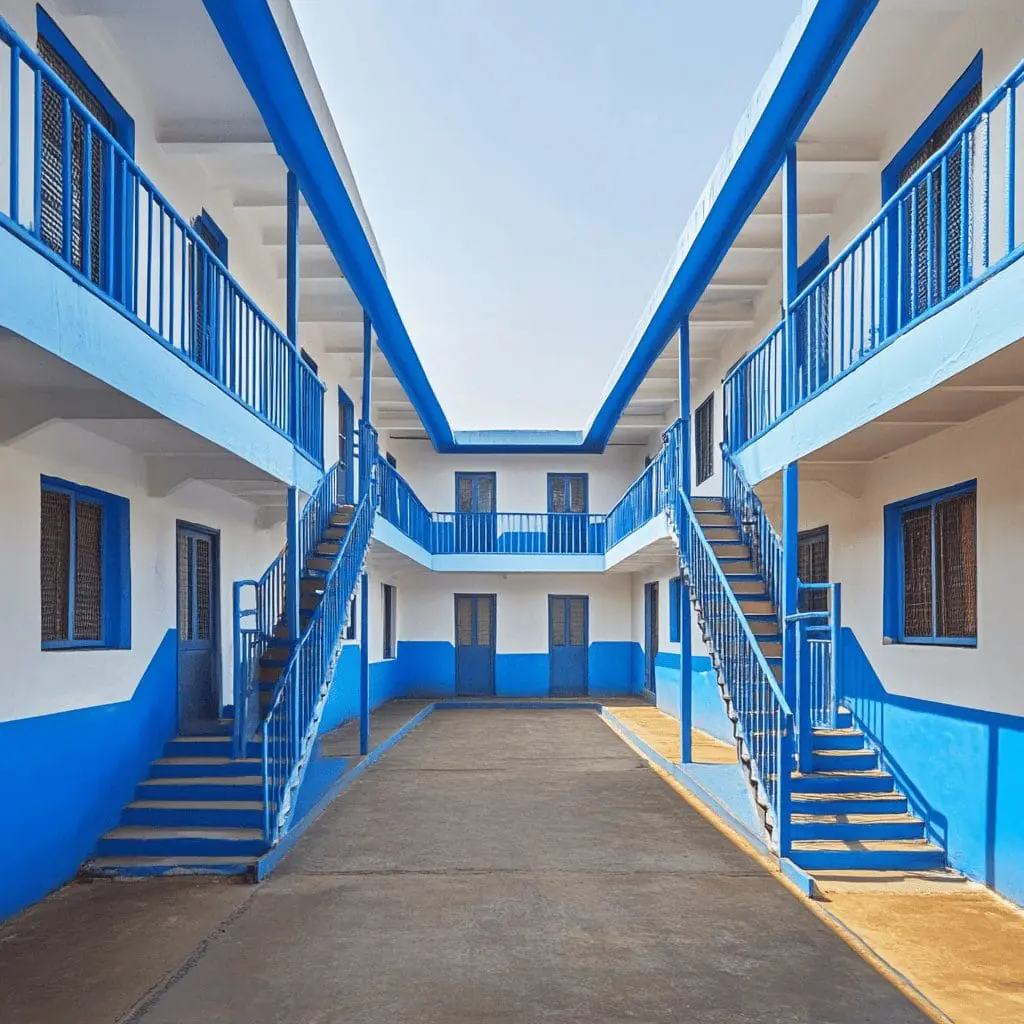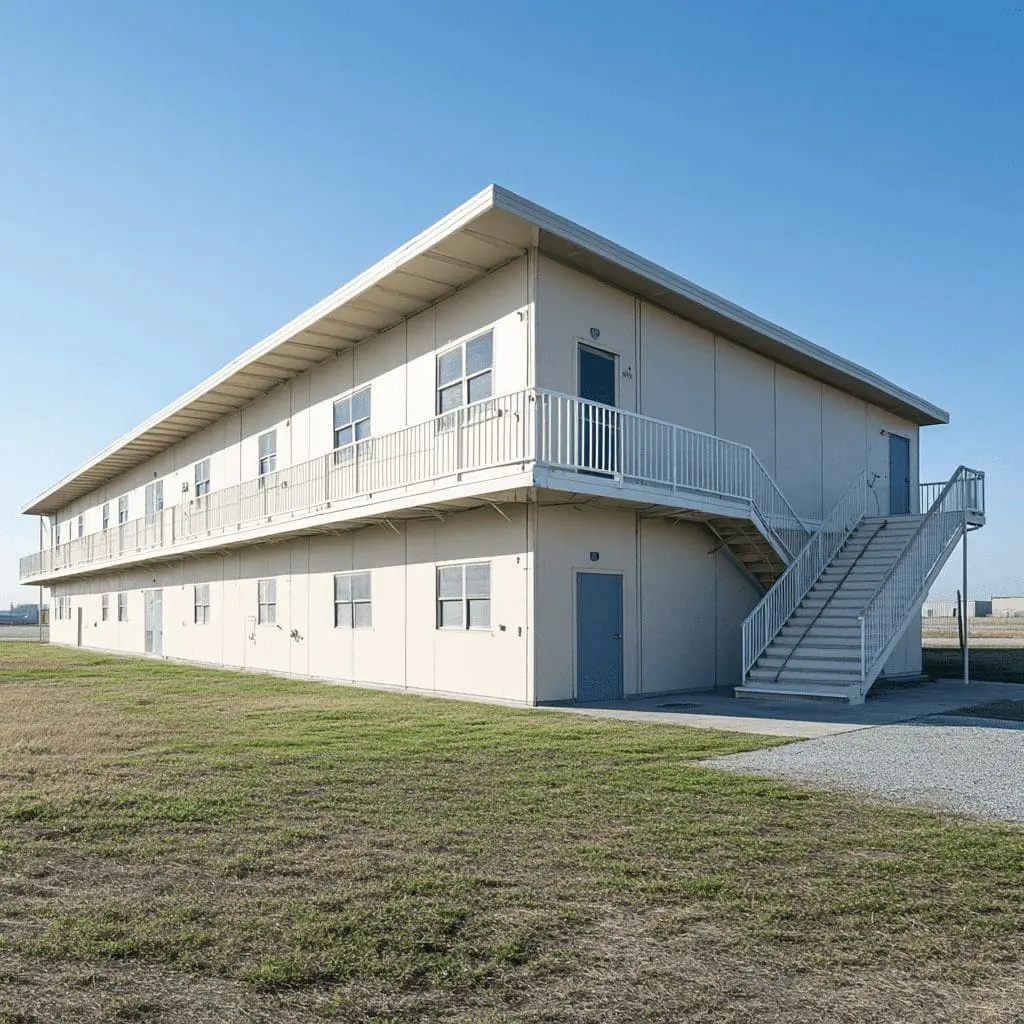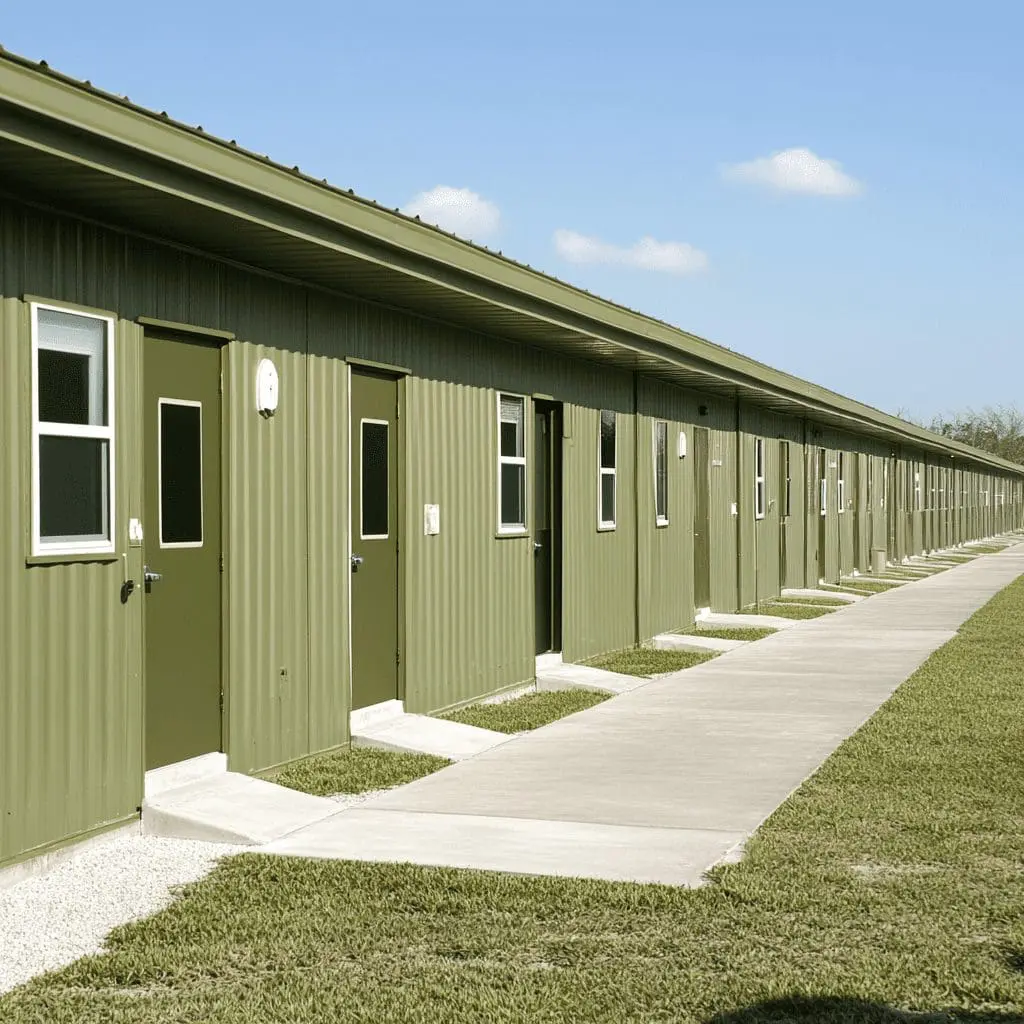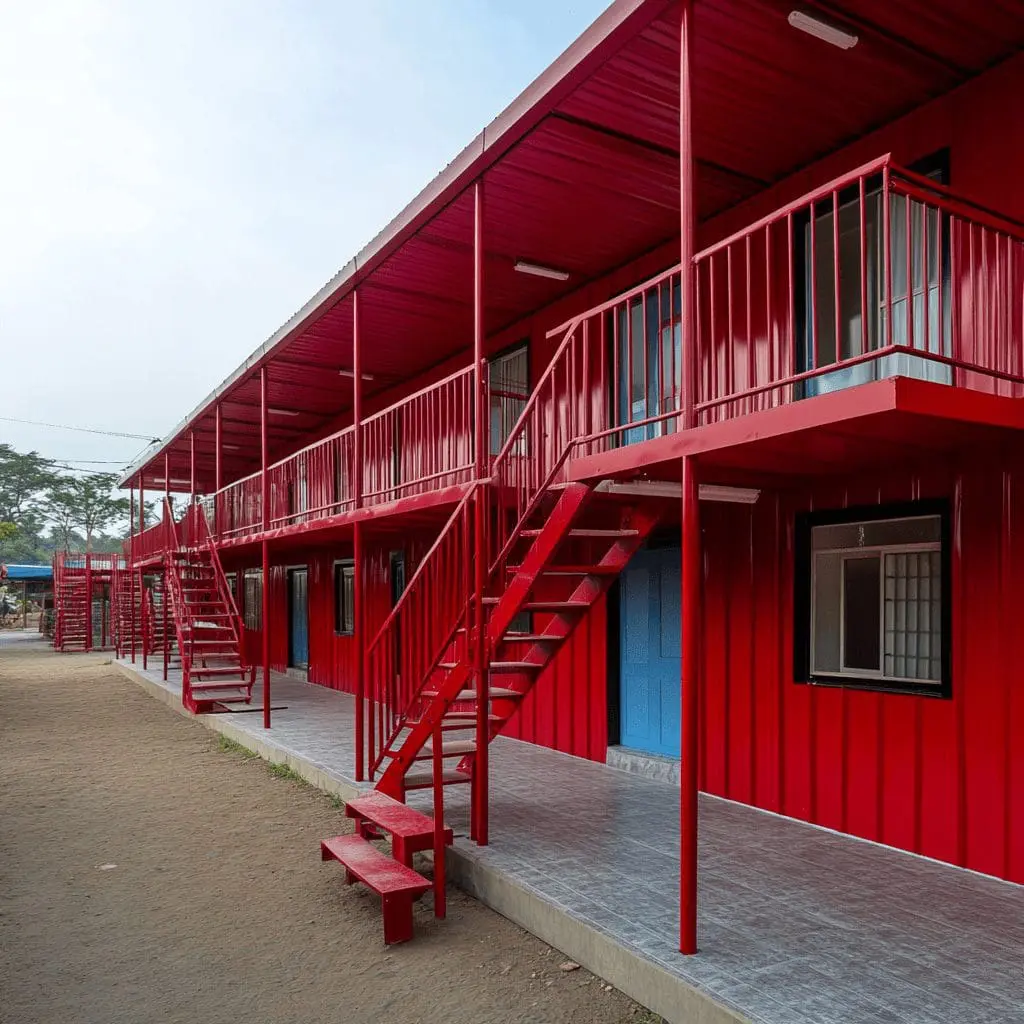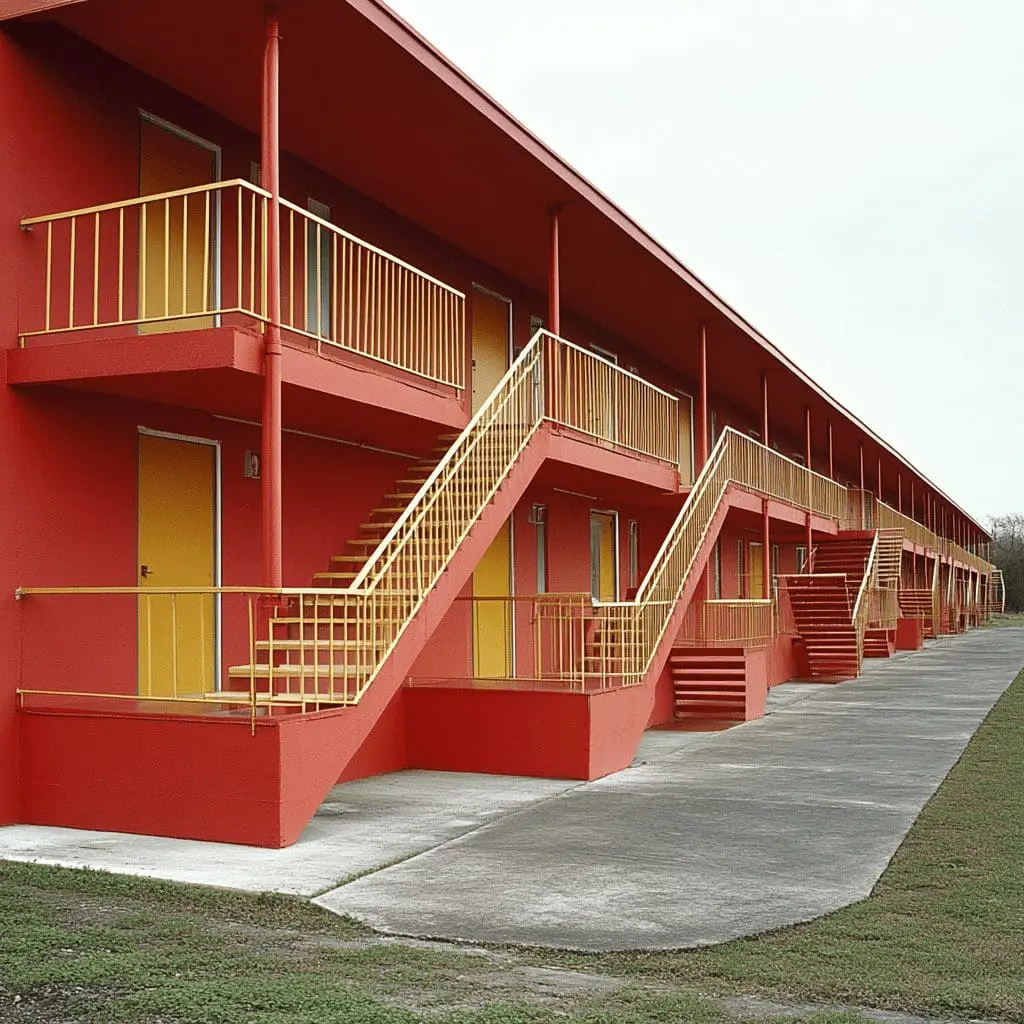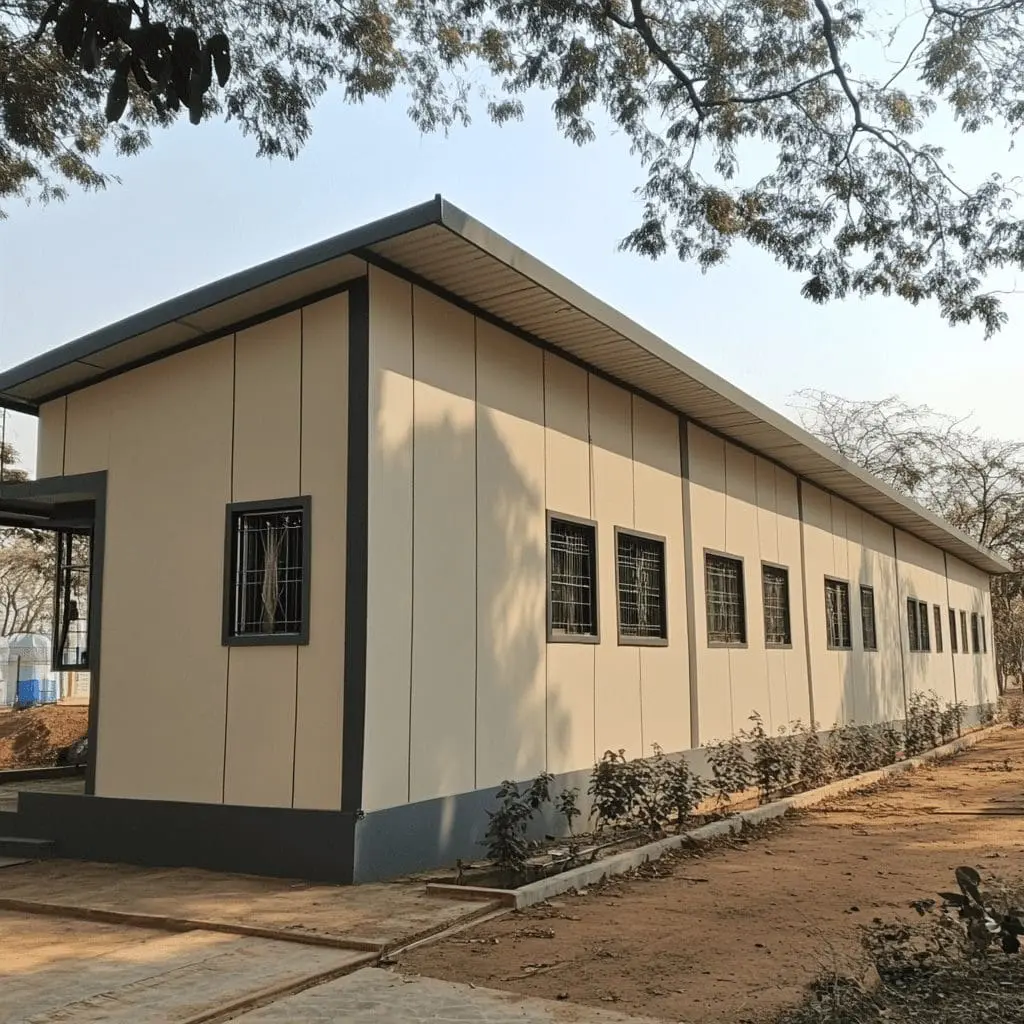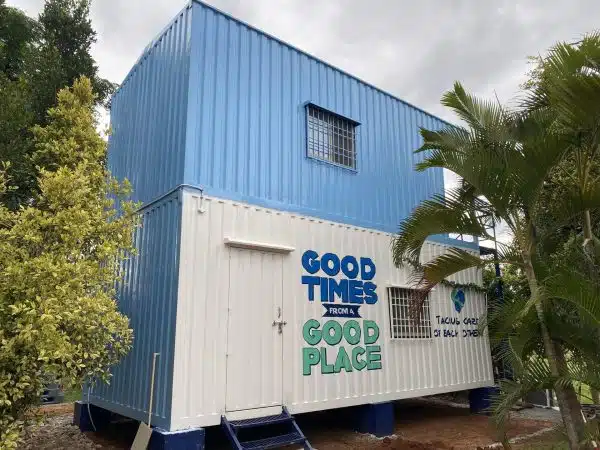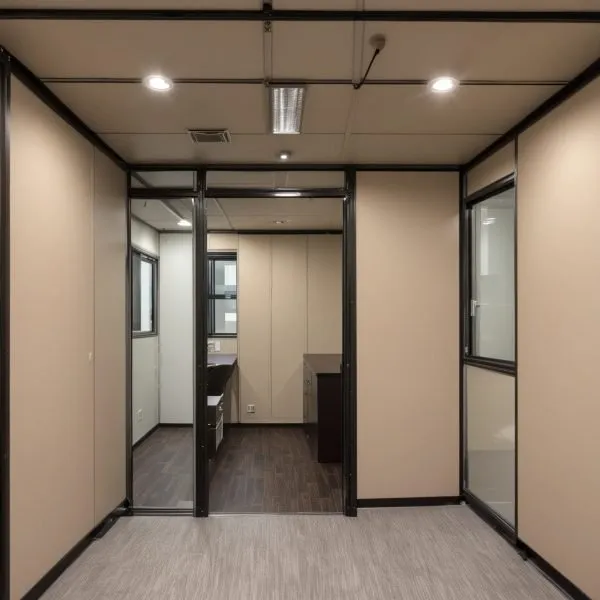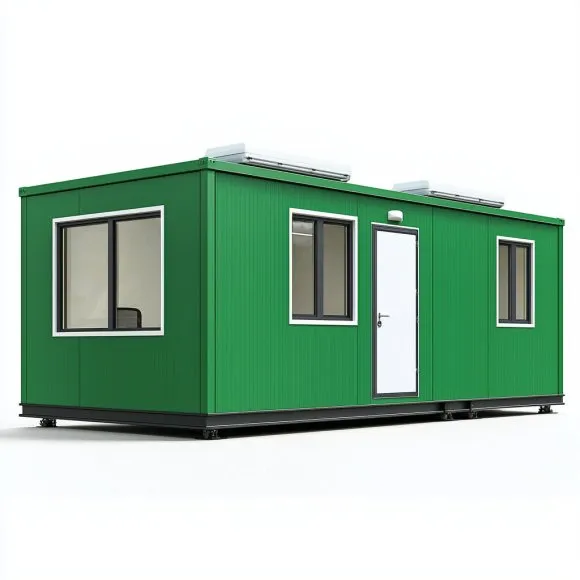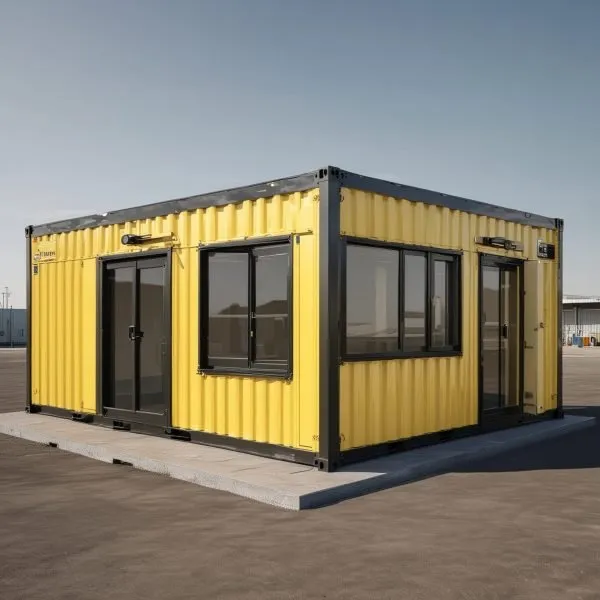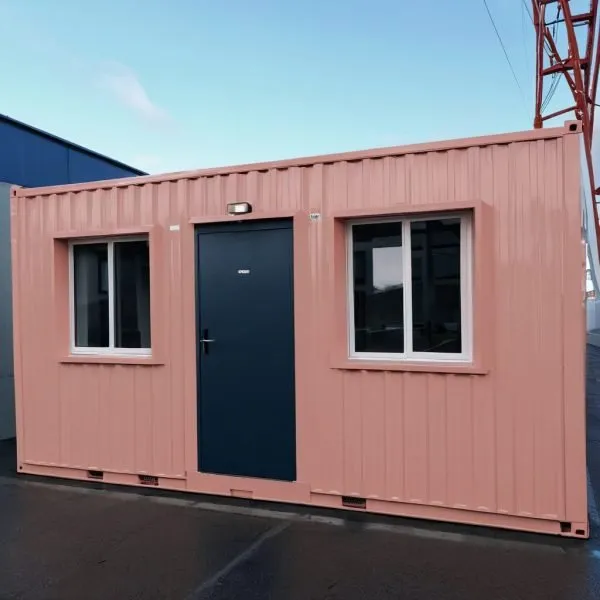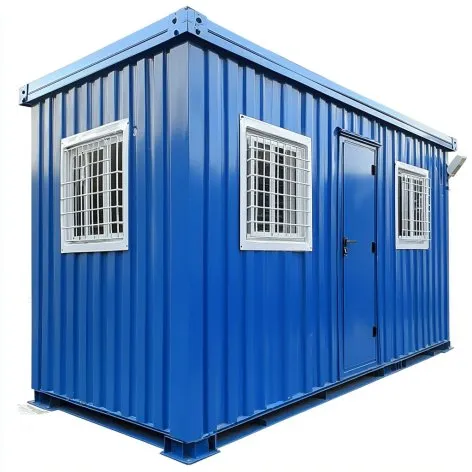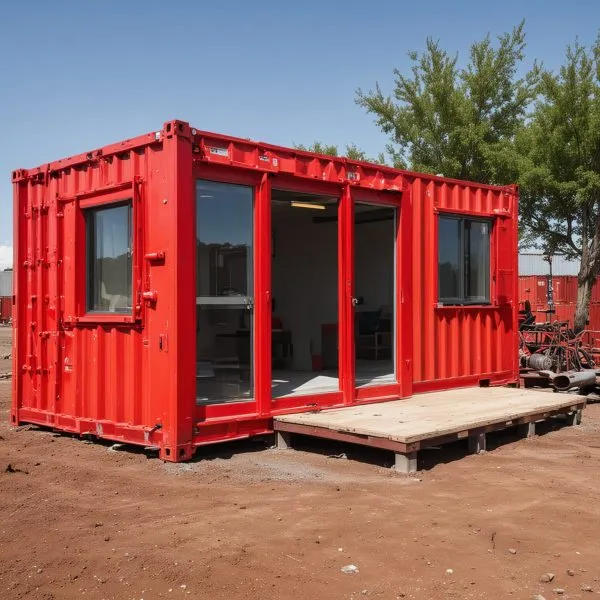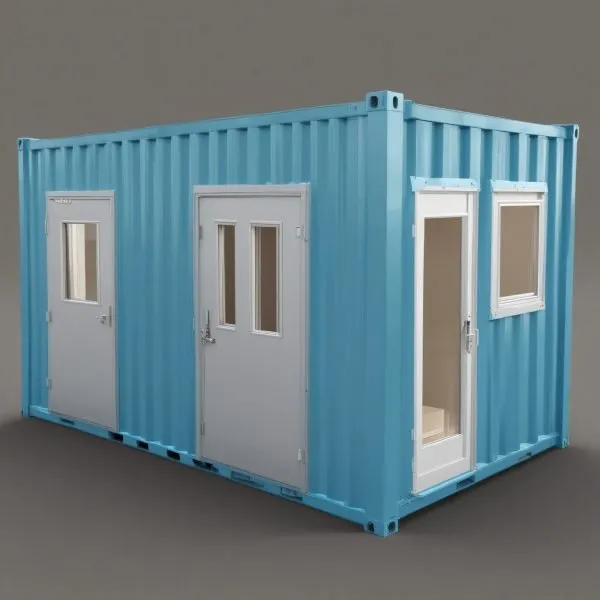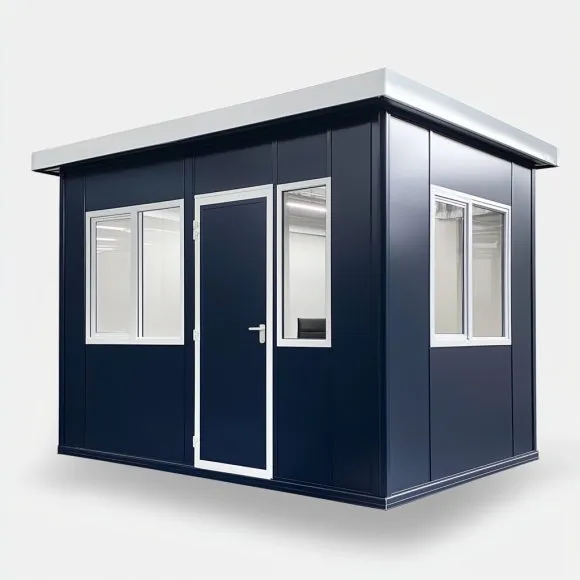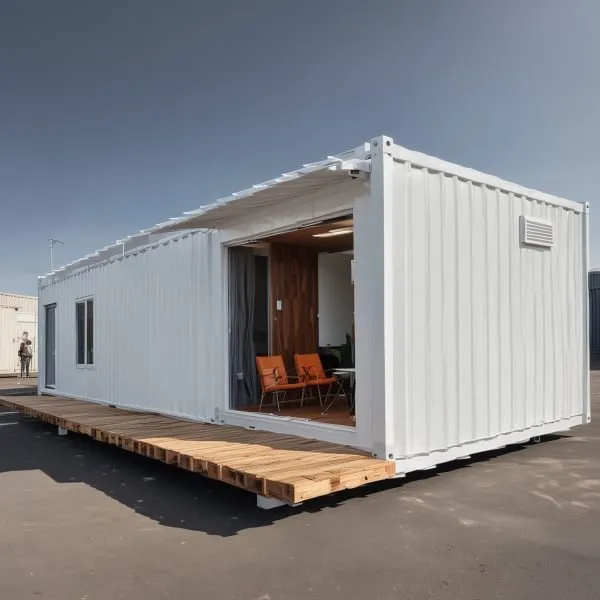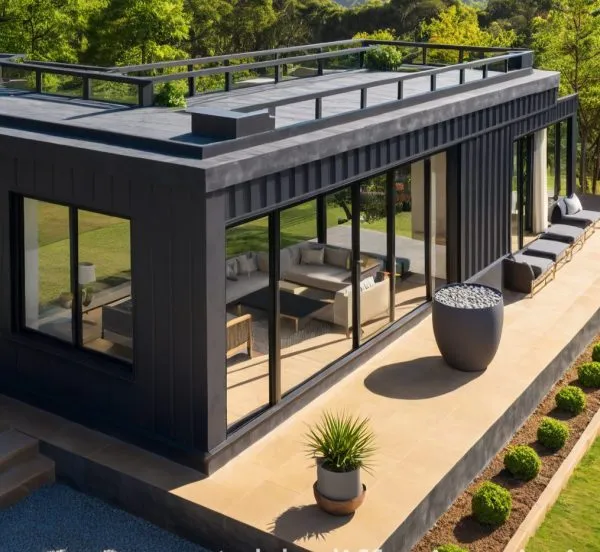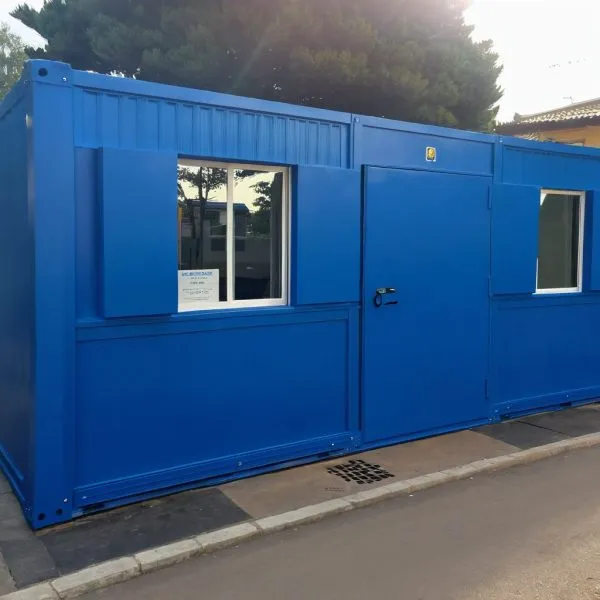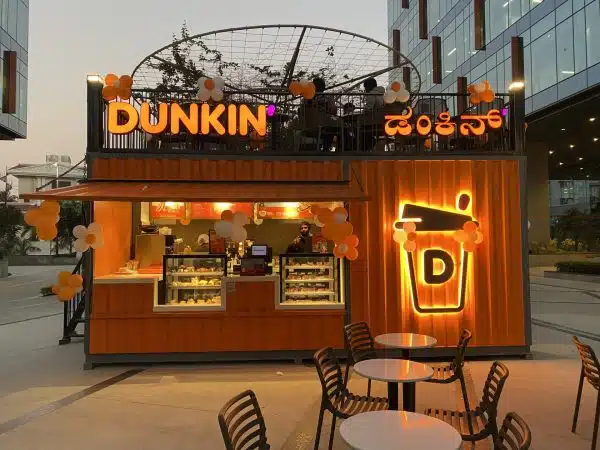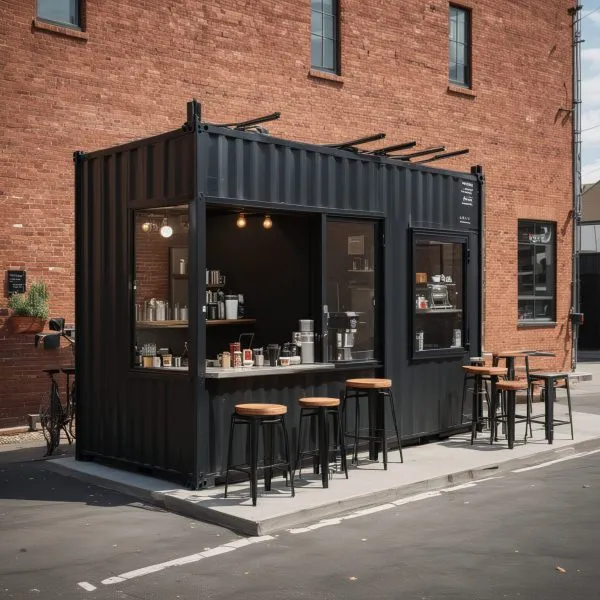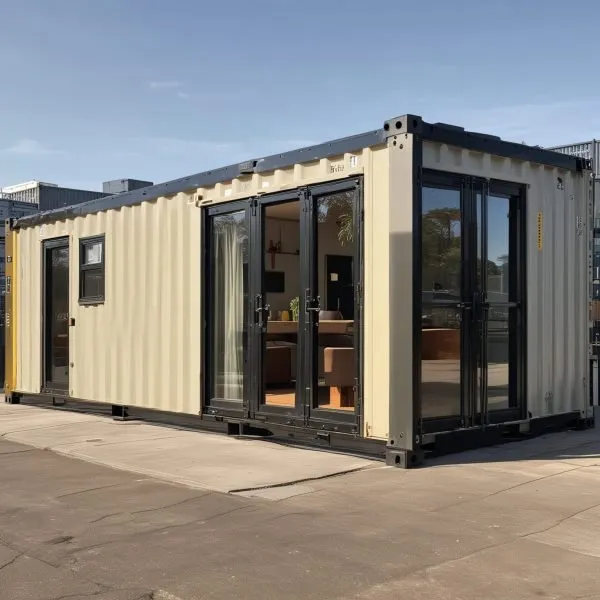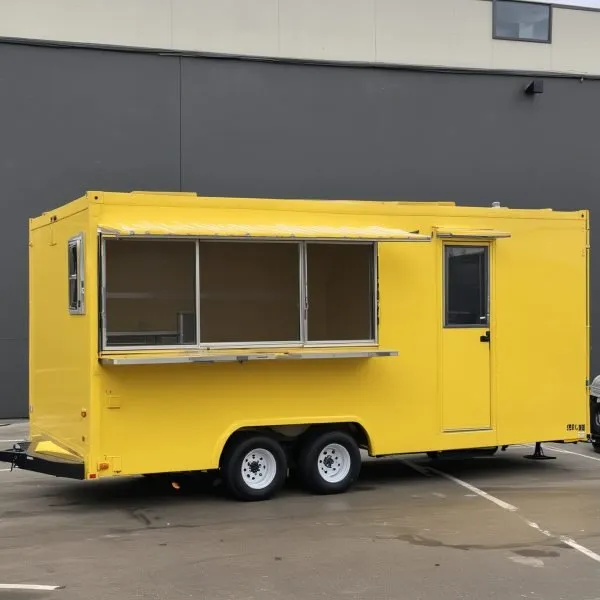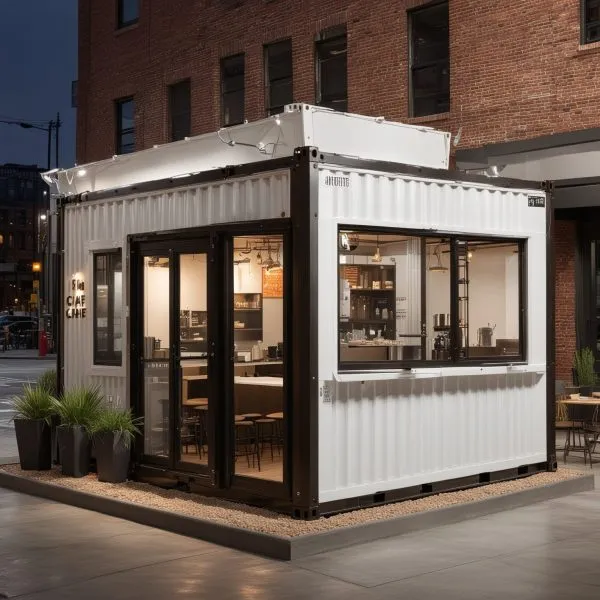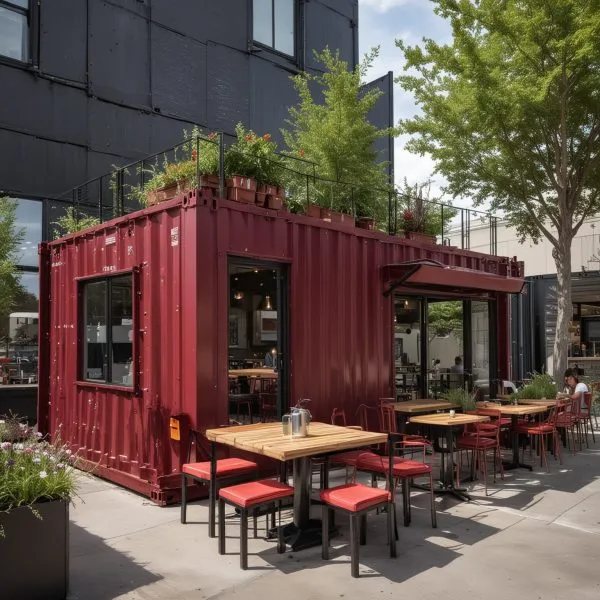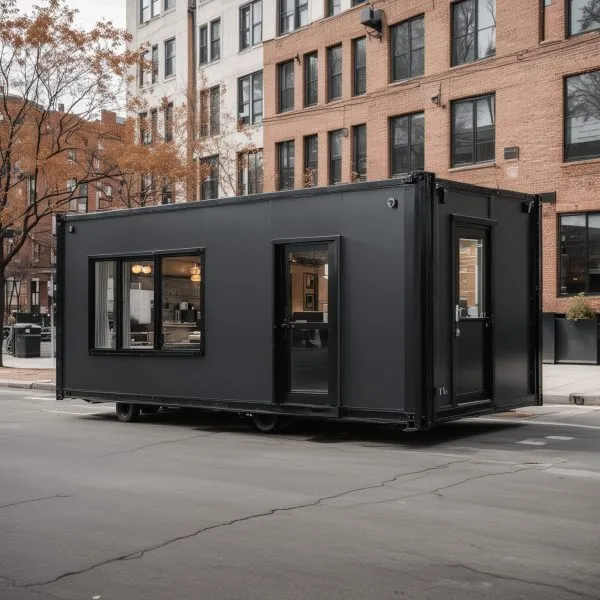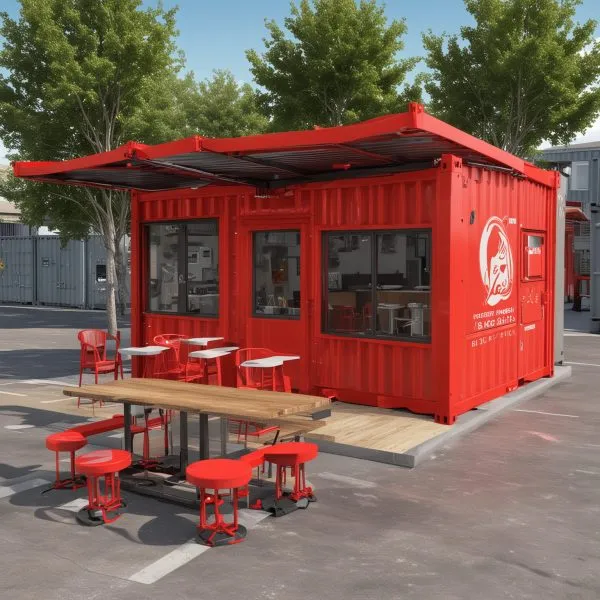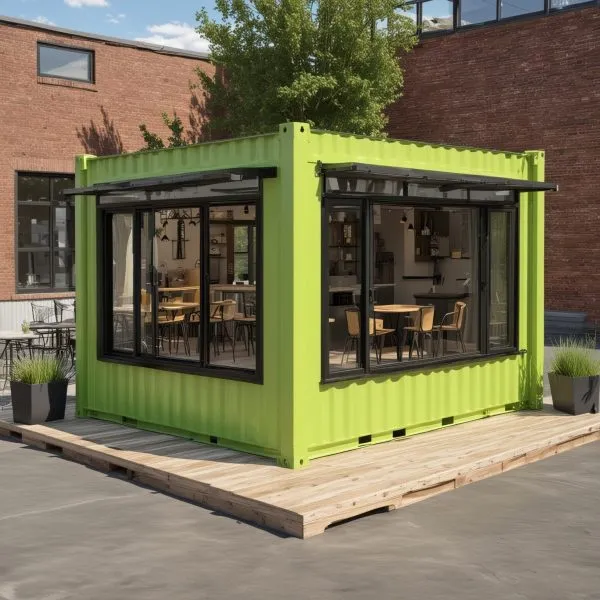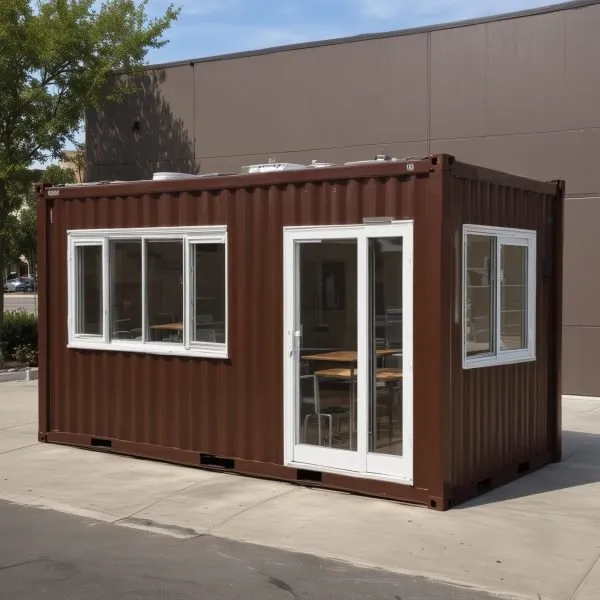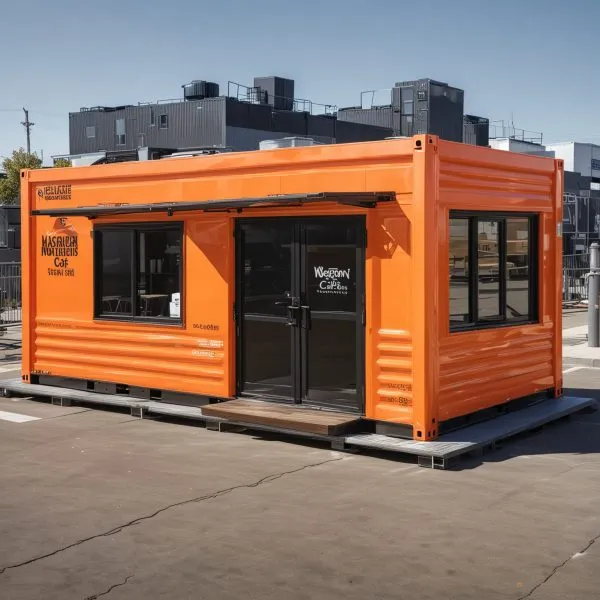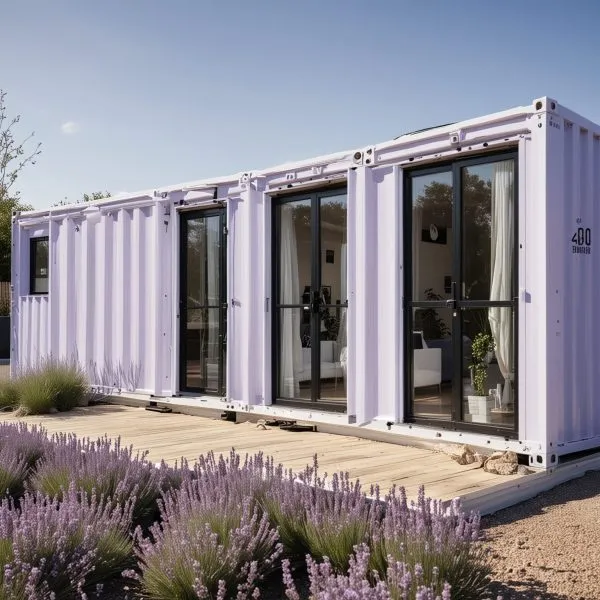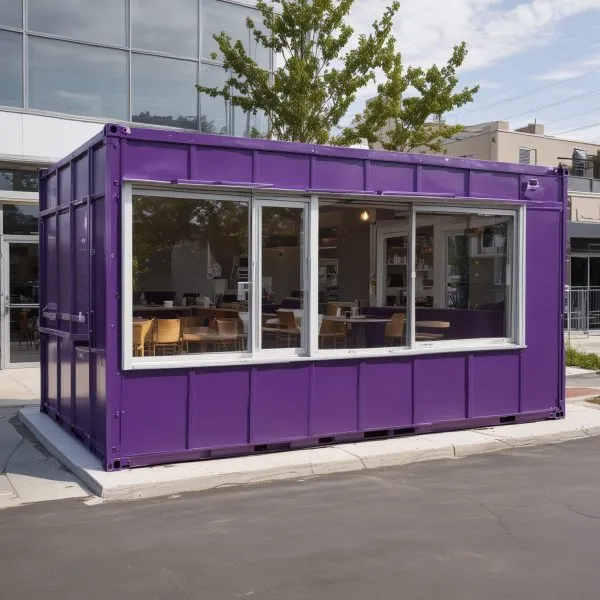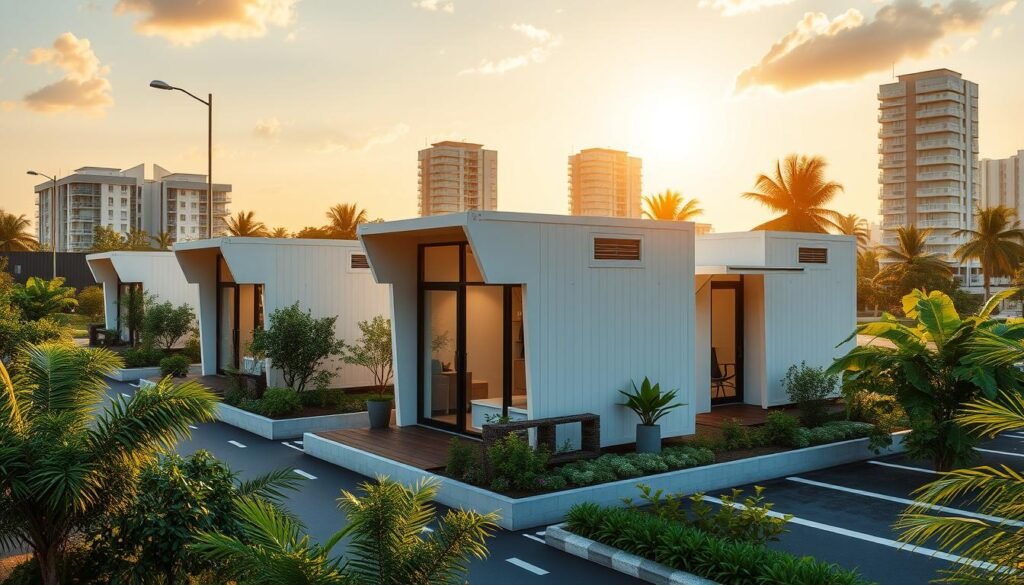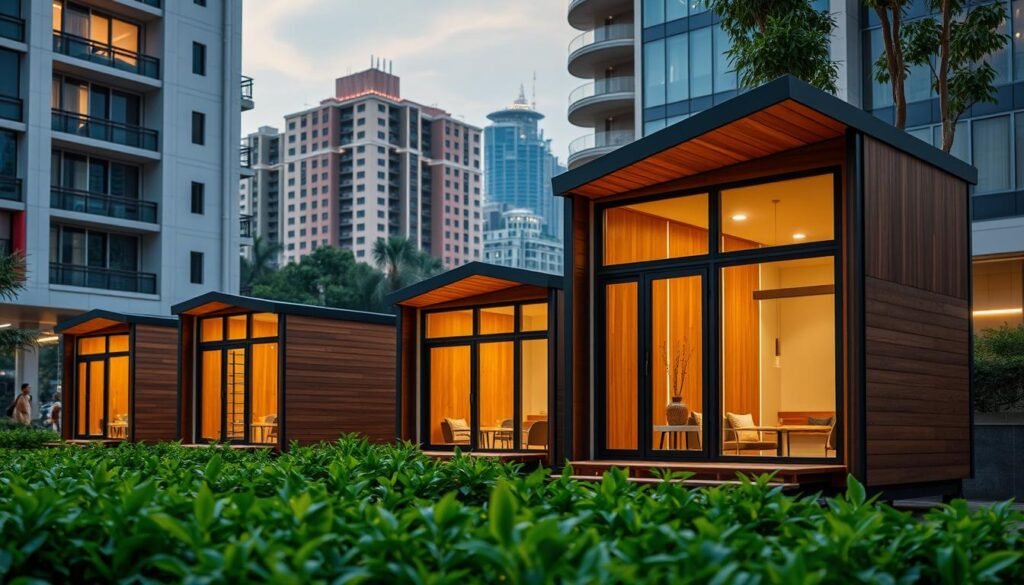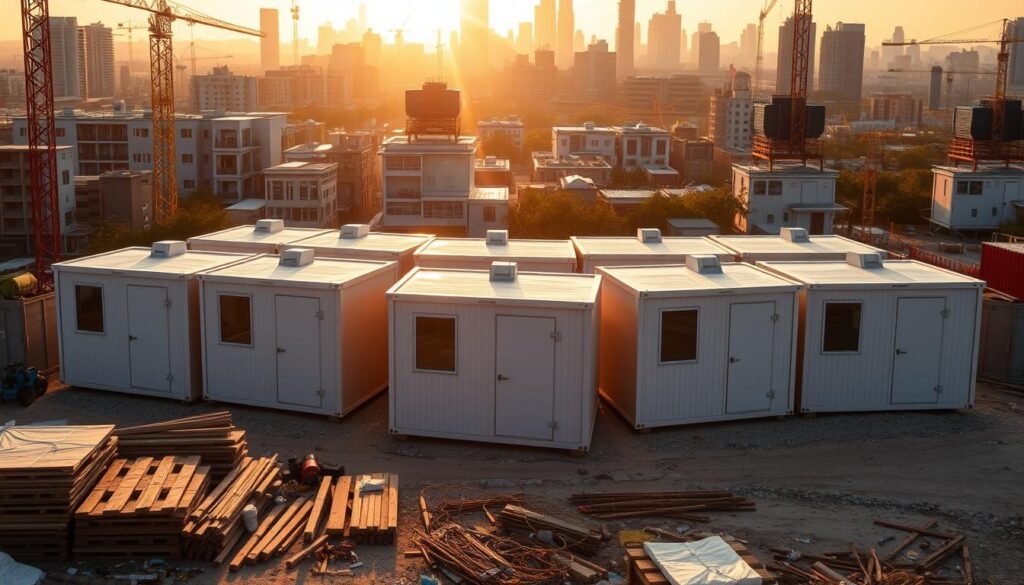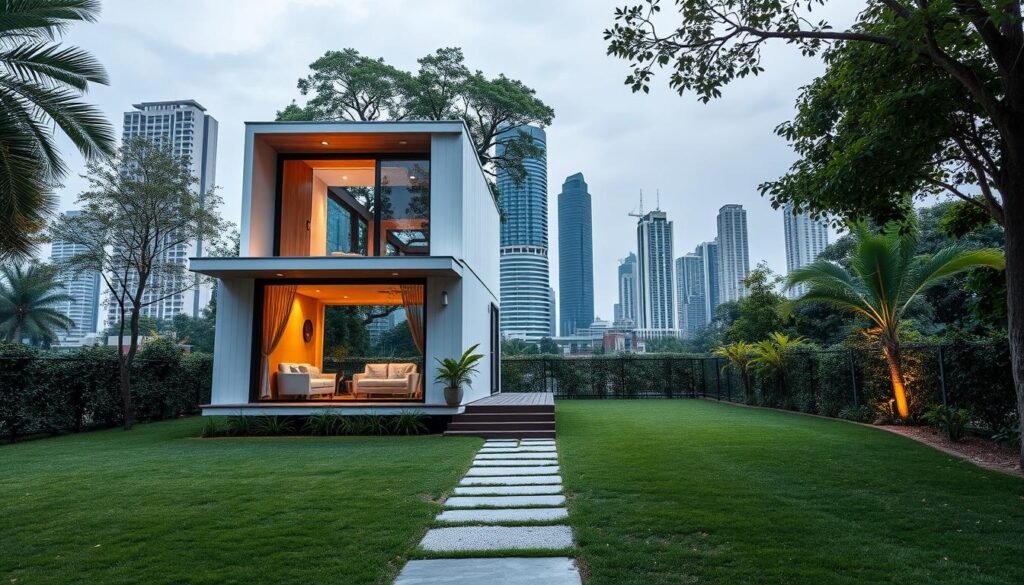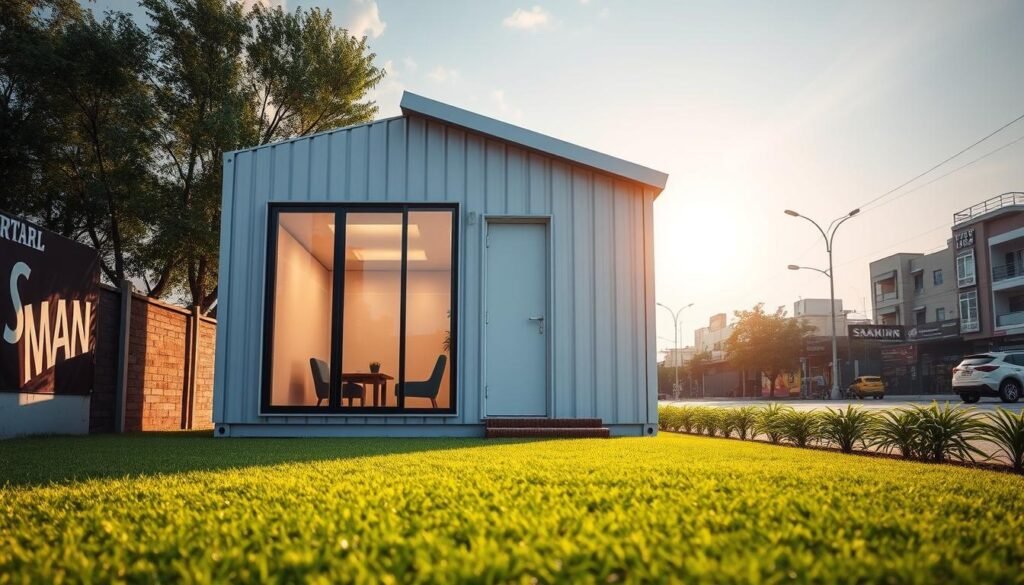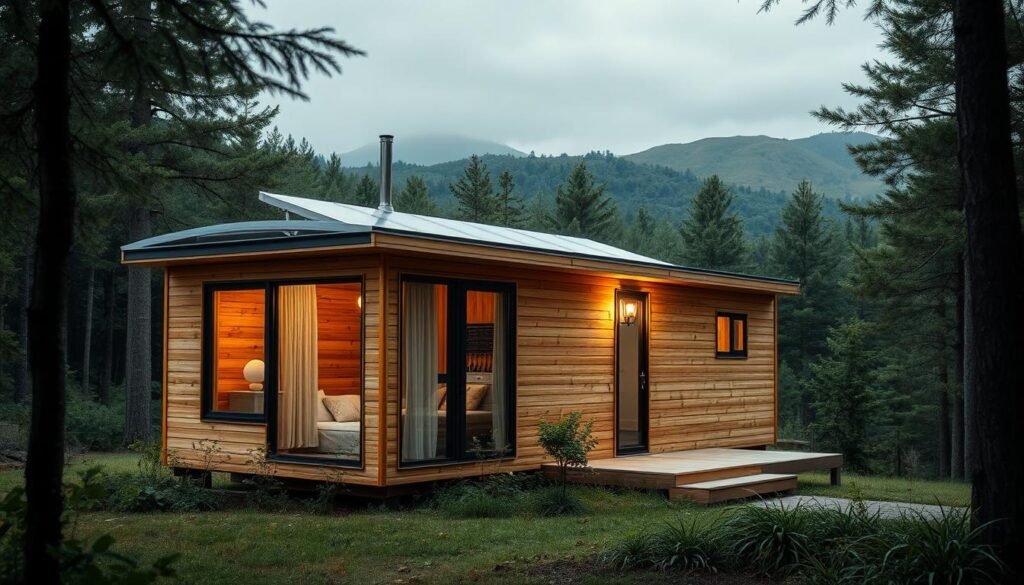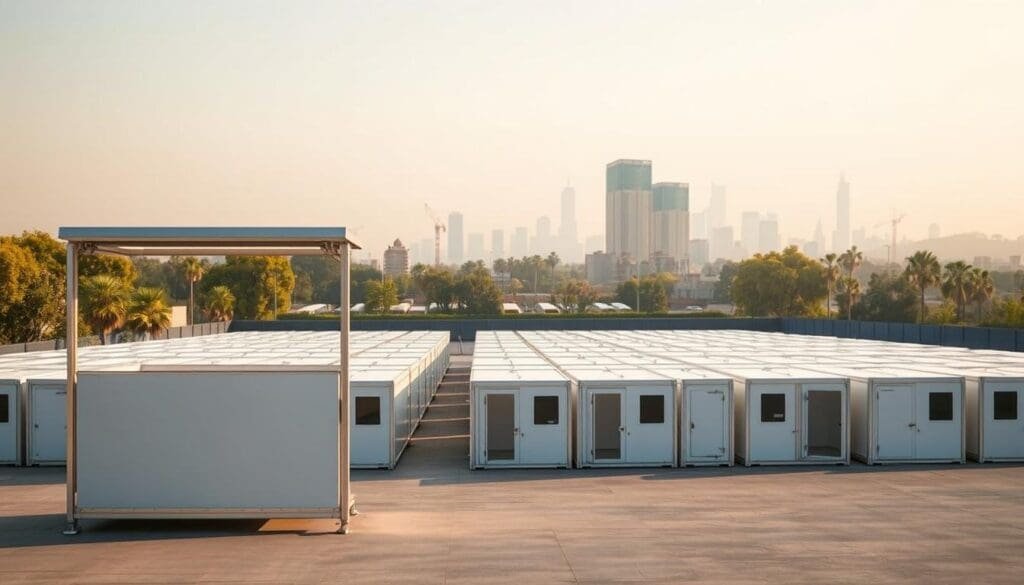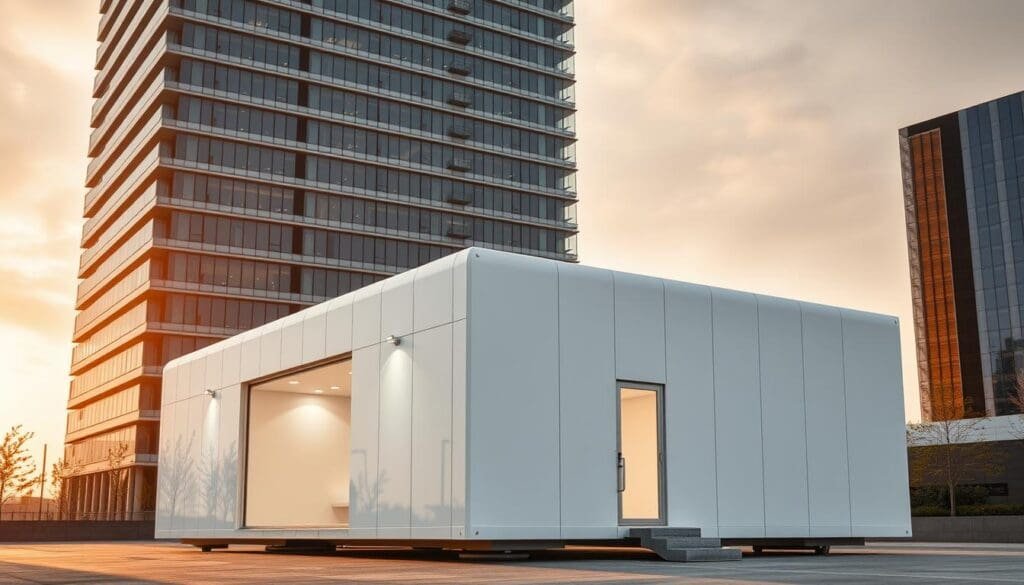Modular Home Costs: Affordable Solutions for Modern Living
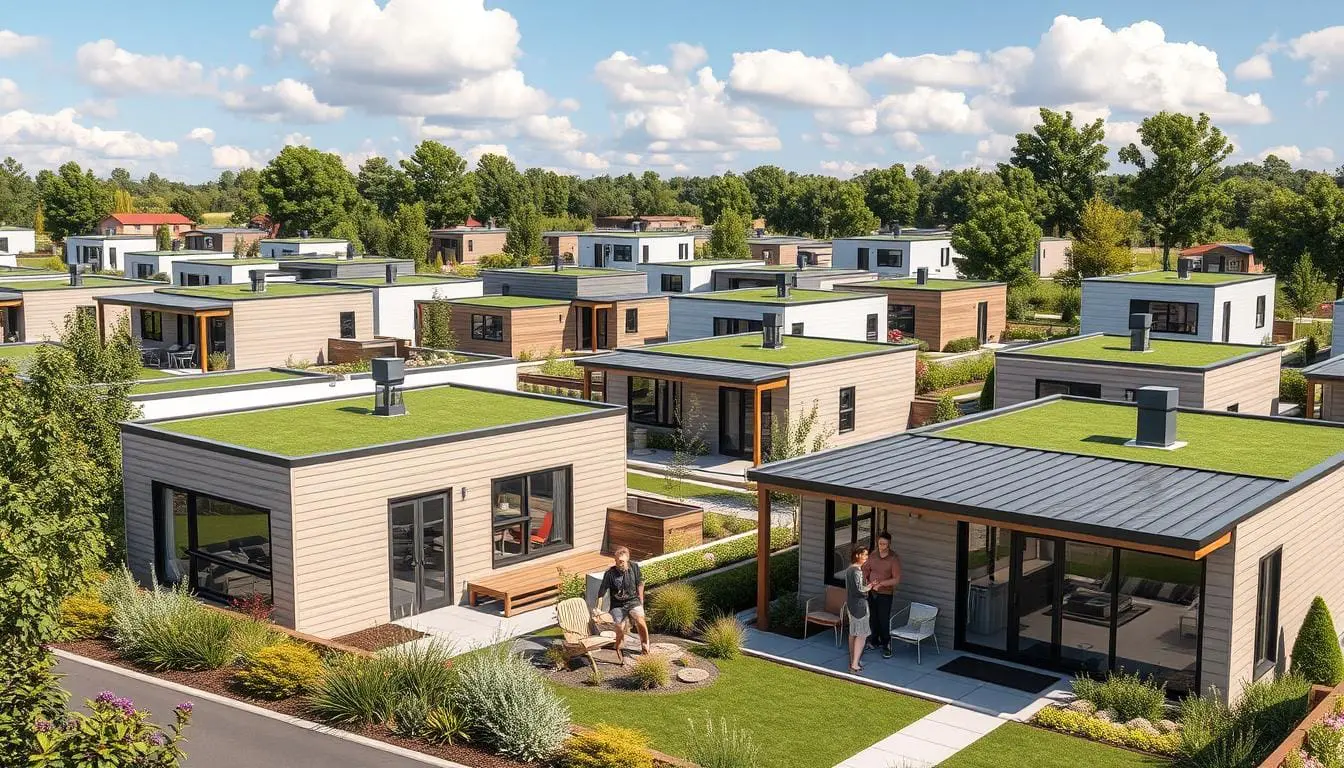
Housing affordability is a big issue today. Modular homes offer a new way to live affordably. But what do they cost, and how do they compare to building a house the old way? Let’s dive into the world of modular home prices and see why they’re a great choice for many in India.
Are modular homes really cheaper, or do they have hidden costs? This is a big question for people looking to buy a home in India. We’ll look closely at the costs of modular homes to help you understand what you might pay. We’ll also talk about what affects the price.
Key Takeaways
Modular homes offer a cost-effective alternative to traditional construction methods in India.
Prefabricated construction can lead to significant savings on labor and material costs.
The modular home industry in India is experiencing rapid growth, driven by demand for affordable housing solutions.
Customization options and site preparation requirements can impact the overall cost of a modular home.
Exploring financing options and understanding the regulatory landscape are crucial for a successful modular home project.
What Makes Modular Homes Affordable?
Modular homes have gained popularity in recent years, primarily due to their affordability and quick construction timelines. One of the key factors that contribute to the cost-effectiveness of modular homes is the efficiency of the building process. Unlike traditional homes, which are built on-site and often susceptible to delays caused by weather, labor shortages, or material delivery issues, modular homes are constructed in a controlled factory environment. This allows for streamlined production, reduced waste, and optimized labor costs, translating into lower overall modular home costs for the consumer.
Another significant element that keeps modular home costs down is the ability to pre-design and standardize various components. By utilizing predetermined designs and efficient use of materials, manufacturers can achieve economies of scale. This standardization not only accelerates the construction process but also allows for bulk purchasing of materials, leading to further savings that are often passed on to the buyers. As a result, buyers can acquire high-quality homes at lower prices compared to their traditional counterparts.
Cost-Saving Factors in Modular Construction
Modular construction has emerged as a game-changer in the building industry, offering innovative solutions that cater to the need for cost-effective housing. One of the primary factors contributing to reduced overall expenses is the efficiency of the construction process itself. Traditional building methods often suffer from delays and unpredictable weather conditions, which can inflate costs and extend timelines. In contrast, modular construction involves assembling prefabricated sections of a home in a controlled factory environment, significantly minimizing construction time on-site. This not only leads to faster project completion but also reduces labor costs, ensuring that overall modular home costs remain more manageable.
Another cost-saving aspect of modular construction lies in its sustainability and resource efficiency. The manufacturing process allows for better control over materials, reducing waste considerably when compared to conventional building practices. This efficiency contributes to lower material costs and encourages the use of sustainable resources, which can further decrease the environmental impact of the construction process. Homeowners also benefit from energy-efficient designs typically incorporated into modular homes, resulting in lower utility bills over time. As such, the initial savings can translate into long-term financial benefits, making modular homes an attractive option for those on a budget.
Modular Homes vs. Traditional Homes: A Cost Comparison
When considering the purchase of a new home, many potential buyers find themselves weighing the benefits of modular homes against traditional homes. One of the key factors driving this decision is the cost. Modular home costs often come in significantly lower than those of traditional homes; this is primarily due to the efficiency of the construction process. Modular homes are built in a factory setting and then transported to the desired location, allowing for reduced labor costs and shorter construction timelines. This streamlined approach can yield substantial savings for buyers looking for budget-friendly options without sacrificing quality.
In addition to initial construction savings, modular homes can also result in lower long-term expenses. Energy efficiency is often built into the design of modular homes, as many manufacturers offer green building options that minimize energy consumption. This means that homeowners can potentially save on utility bills over time. Furthermore, due to their construction methods, modular homes tend to be built to higher standards of durability, which can reduce maintenance costs in the long run. On the other hand, traditional homes may come with hidden expenses, such as lengthy delays and unexpected costs for materials and labor that may arise during the building process.
However, the cost comparison extends beyond just construction and maintenance. Financing options for modular homes can sometimes be more limited than those available for traditional homes, which is an important consideration for buyers. Some banks and lending institutions may have specific criteria or higher rates for modular home loans, impacting the overall financial feasibility. Additionally, the resale market for modular homes can vary significantly by region, with some buyers still harboring misconceptions about their value compared to traditional homes. This factor can also influence long-term investment potential.
Ultimately, buyers need to carefully evaluate their individual circumstances, including their budget, lifestyle preferences, and long-term goals, when choosing between modular and traditional homes. While modular home costs present an attractive alternative, it’s essential to consider the broader implications, including financing and future resale value. By doing thorough research and possibly consulting with real estate professionals, potential homeowners can make informed decisions that align with their financial and personal needs.
Understanding Modern Modular Housing Solutions
The world of prefabricated housing has changed a lot. Now, we have portable cabin solutions and modular construction. These new ways offer fast builds, less waste, and better quality.
Benefits of Modular Home Construction
Modular home construction is rapidly gaining popularity as an innovative and cost-effective alternative to traditional building methods. These homes are prefabricated in sections or modules in a factory setting, transported to the site, and assembled, which significantly reduces both the time and labor costs associated with construction. One of the primary advantages of modular home construction is that it allows for more controlled building conditions, meaning that weather delays and other potential setbacks that can plague traditional sites are minimized. This efficiency not only leads to quicker occupancy but also often translates to lower overall modular home costs, making homeownership more accessible for many.
Another significant benefit is the flexibility of design that modular homes offer. Homebuyers can choose from various floor plans and architectural styles, enabling them to create a personalized living space that meets their specific needs. Various customization options, from layout choices to finishes, allow for an impressive degree of personalization that is often more challenging to achieve in traditional construction. This adaptability makes modular homes appealing for families of different sizes and lifestyles, promoting a sense of ownership and pride in the final product.
Evolution of Prefabricated Housing
Prefabricated housing has grown a lot. It’s no longer just simple. Now, it’s about modern looks and living.
Benefits of Choosing Modular Construction
- Builds faster, so projects finish quicker
- Creates less waste, making it better for the planet
- Ensures quality because it’s made in a factory
- Allows for more design choices and personal touches
- Is cheaper because it uses materials wisely
Key Market Trends in 2024
Experts say big changes are coming in 2024. We’ll see more green materials, smart homes, and homes that save energy. People want homes that are their own.
Knowing about modular housing’s history and future helps. It guides those looking at portable cabin solutions and the benefits of choosing modular construction.
Breaking Down Modular Home Costs
Modular home pricing is a big deal for those looking for affordable prefab homes in India. It’s important to know what affects the cost. This includes materials, labor, transportation, and installation.
The size of the home is a big factor. Bigger homes need more materials and take longer to build, which means higher costs. The design’s complexity also plays a role, as it can add to the engineering and fabrication costs.
Where you plan to put the home matters too. Homes going to remote areas might cost more to transport. But homes in cities could have higher land and labor costs. You also need to think about site prep, foundation work, and utility connections, which can add to the price.
Modular homes can be cheaper than traditional houses. They use less material, waste less, and are built faster. But, how much you save depends on your project and what you want.
Knowing about modular home pricing helps homeowners make smart choices. They can find affordable prefab homes that fit their budget and lifestyle. With careful planning, they can manage the costs of modular construction and get their dream home.
Comparing Traditional vs. Modular Construction Expenses
The choice between traditional and modular building methods can greatly affect costs. Let’s explore the main differences and how they impact your budget.
Labor Cost Differences
Traditional construction needs a bigger team and more on-site work, raising labor costs. Modular construction, however, is more efficient. It uses labor better, leading to lower costs compared to traditional methods.
Material Efficiency Analysis
Modular construction uses factory settings to cut down on material waste. This can save a lot on material costs. Traditional building often has more waste and inefficiencies.
Timeline Impact on Budget
The project timeline greatly affects the budget. Modular construction is faster, with most work done in a factory. This means quicker completion and lower costs for site rentals and financing.
Looking at construction cost comparison and modular vs. traditional building, modular construction seems more cost-effective in India. It optimizes labor, materials, and time, making it a budget-friendly choice.
Affordable Prefab Home Options in India
India’s affordable housing market is growing fast. Modular construction is leading the way with innovative, cost-effective homes. This meets the demand for affordable housing.
Entry-level modular homes are a great example. They offer a small but functional living space at a lower cost than traditional homes. These homes use space wisely and cost-effective materials, perfect for first-time buyers or those downsizing.
Budget-friendly modular homes are also gaining popularity. They focus on being affordable without sacrificing quality. These homes use local materials and simple construction, saving money compared to traditional building.
Government programs like the Pradhan Mantri Awas Yojana (PMAY) help too. They offer financial help and incentives to individuals and developers. This makes it easier for more people to get affordable prefab homes.
Exploring Container Homes as a Modular Option
As the demand for innovative housing solutions continues to rise, container homes are emerging as a popular and sustainable option. This modular living concept utilizes repurposed shipping containers, providing a unique alternative to traditional housing. One of the main advantages of container homes is their swift construction timeline. These structures can often be assembled in a matter of weeks, allowing homeowners to move in much faster than with conventional building methods. Furthermore, the modular design provides flexibility, as units can be stacked or arranged in various configurations to suit individual preferences and site specifications.
Cost is another pivotal factor, and many prospective homeowners are curious about modular home costs. Generally, container homes can be more affordable than traditional houses, especially when considering material costs and construction efficiency. While the initial purchase price of the shipping containers may vary based on size and condition, the overall expenditure can often remain lower due to reduced labor costs and shorter build times. Additionally, many container homes are built with energy efficiency in mind, which can help lower utility bills in the long run.
In an era where environmental considerations are increasingly vital, container homes offer a sustainable solution by repurposing materials that would otherwise contribute to landfill waste. Using these containers not only minimizes the need for new building materials but also encourages a circular economy. Many owners personalize their spaces with eco-friendly features, further enhancing the environmental benefits of this modular living option. Beyond sustainability, the stylish and modern appearance of container homes is attracting a younger demographic eager to embrace a minimalist lifestyle.
Ultimately, exploring container homes as a modular option reveals a plethora of benefits that cater to affordability, efficiency, and environmental stewardship. With the ongoing evolution in design and construction methodologies, this innovative housing solution stands out as a forward-thinking choice for those looking to explore alternative living arrangements. Whether for a permanent residence or a seasonal getaway, container homes have the potential to reshape the future of affordable, eco-conscious living.
The demand for affordable housing in India keeps growing. This means more opportunities for budget-friendly modular homes and prefab solutions. It’s a promising future for those wanting a comfortable, affordable home without breaking the bank.
Customization Options and Their Price Impact
Customizing a modular home can greatly affect its cost. Choices in interior finishes, exterior elements, and structural changes all play a role. Knowing these options and their costs is key for those building their dream home.
Interior Design Choices
The interior of a modular or container home offers many customization options. You can pick from various flooring materials, cabinetry styles, lighting fixtures, and appliance packages. Each choice has its own price tag. Opting for premium finishes or custom elements can increase the cost.
Exterior Finishing Options
The exterior of a modular or prefab home also offers customization choices. You can select from different siding materials, roofing options, and landscaping features. High-end or specialized finishes can add to the overall cost.
Structural Modifications
Homeowners may also consider structural changes to their home. This could include adding extra rooms, reconfiguring the layout, or incorporating unique architectural elements. These changes can significantly affect the cost.
Understanding the cost of modular home customization, prefab house design options, and container house interior design is crucial. By carefully considering these options and their costs, homeowners can create a home that meets their needs and stays within budget.
Site Preparation and Foundation Requirements
Building a modular home in India needs careful site prep and a strong foundation. This ensures the home lasts long and stays stable. From modular home site prep to foundation costs, getting the land ready for prefab homes is key.
Before starting, the site must be tested for soil. This tells us what foundation is best. It checks for uneven ground or water issues that could harm the home’s stability. After testing, the land is leveled and utilities like electricity and water are set up.
- Soil Testing: Checks the soil to find any problems that could affect the foundation.
- Land Leveling: Makes sure the site is flat and even, giving a solid base for the home.
- Utility Connections: Sets up important services like electricity, water, and sewage before building starts.
The foundation type chosen greatly affects foundation costs. You might choose a slab, raised, or pile foundation. Each has its own benefits and needs, depending on the site and home design.
Planning site prep and foundation well helps make building a modular home smooth and affordable. It leads to a strong and lasting home.
Container House Solutions and Pricing
Container homes are becoming a hit in modern modular housing. They are affordable, versatile, and stylish. This makes them a great choice for those looking for different living spaces.
Single Container Homes
A single container home is a small, self-contained living space made from a shipping container. They can be customized for various needs, from small holiday homes to main residences. The price depends on size, features, and location, but they’re cheaper than traditional homes.
Multi-Container Configurations
For bigger or more complex homes, multi-container setups are a good option. They combine several containers to create large, multi-level homes. While more expensive than single-container homes, they offer more space and customization.
Luxury Container House Options
Luxury container homes are also available for those wanting high-end living. These homes have premium finishes, smart home tech, and resort-style features. Though pricier, they provide a sustainable, modern lifestyle with comfort and style.
When choosing a container house, think about the container house building plans, site office container price, and luxury container homes options. This ensures your choice fits your budget and lifestyle.
Financing Options for Modular Homes
This section looks at the different ways to finance modular homes in India. It covers everything from modular home loans to prefab house financing programs. It’s important for those looking at affordable housing mortgages to understand these options.
Traditional mortgages are a common way to finance modular homes. Banks and housing finance companies in India offer special loans for this type of construction. These loans have flexible terms, good interest rates, and easy approval processes.
The Indian government also has programs to help with affordable housing mortgages. The Pradhan Mantri Awas Yojana (PMAY) offers subsidies and low-interest loans for low- and middle-income families. These programs make it easier for more people to buy modular homes.
There are also specialized financing companies for prefab house financing. These companies work with modular home makers to make getting a loan easier and cheaper. This helps people move into modern, green homes without hassle.
However, financing modular homes in India comes with its own set of challenges. Buyers need to understand modular home loans and affordable housing mortgages. They also need to match their finances with the current market. By looking at all these options, buyers can make smart choices and enjoy the benefits of modular homes.
Permits and Legal Requirements in India
Building modular homes in India comes with a lot of rules. Homeowners and builders need to know the building code compliance well. This ensures their projects are up to standard.
Local Building Codes
Every state and city in India has its own modular home regulations. These rules cover things like how strong the structure must be, electrical and plumbing systems, and more. It’s key to follow these rules to get the right approvals.
Required Documentation
- Detailed construction plans and architectural drawings
- Proof of land ownership or lease agreement
- Application forms for prefab construction permits
- Technical specifications of the modular home components
- Proof of compliance with local building codes
Approval Process Timeline
The time it takes to get approvals can change a lot. It depends on where you are and how complex your project is. Sometimes, it’s quick, other times it takes months. Plan your construction schedule carefully to avoid delays and extra costs.
Knowing the rules for permits is vital for a smooth modular home project in India. By understanding the local codes, what documents you need, and how long it takes, you can manage the process well. This way, you can make your modular home dream a reality.
Energy Efficiency and Long-term Savings
Modern energy-efficient modular homes and sustainable prefab houses are designed for long-term savings. They use smart design and construction to save money over time. This is thanks to their focus on energy efficiency.
Advanced insulation is a big reason these homes save energy. The prefabricated parts are made to keep heat in and out. This makes homes cozy and cuts down on heating and cooling costs. Homeowners see lower bills every month.
- Highly efficient insulation materials, such as spray foam or rigid panels, are integral to the modular construction process.
- Advanced window and door systems further contribute to the thermal efficiency of these energy-efficient modular homes.
- Integrated smart home technologies often complement the energy-saving features, allowing homeowners to monitor and optimize their energy usage.
Modular and prefab construction also use energy-efficient appliances and sustainable materials. This boosts the homes’ long-term savings. These homes offer real financial benefits to homeowners for years.
Energy-efficient modular homes offer more than just cost savings. They also help the environment. By using less energy and cutting down on emissions, they support eco-friendly living.
Maintenance Costs and Considerations
Modular homes have their own maintenance costs and considerations. Modular home upkeep and prefab house maintenance are easier than traditional homes. But, there are still long-term costs to think about.
Keeping an eye on the home’s modules and connectors is key. This helps keep the prefab structure strong over time. Also, long-term costs of modular homes might include fixing or replacing parts like windows, doors, or roofs.
- Routine maintenance inspections to check for any wear and tear
- Potential repairs or replacements of modular components over time
- Cleaning and upkeep of the home’s exterior and landscaping
Prefab house maintenance is often more efficient and cost-effective. Modular homes are built to last and be easy to maintain. This means fewer big repairs or renovations later on.
It’s important to understand the maintenance costs and considerations of modular homes. This helps with budget planning and making the right choice. By thinking about these costs, homeowners can make a smart decision for their needs and budget.
Leading Modular Home Manufacturers in India
In India, the modular housing market is growing fast. Many top modular home manufacturers and prefab house builders are leading the way. They focus on quality assurance in modular construction, new designs, and great customer service.
Quality Standards
Indian modular home makers like SAMAN Portable Office Solutions in India follow strict quality rules. They check every part of making a home, from picking materials to finishing it. This ensures homes are strong and reliable, giving buyers confidence.
Warranty Coverage
Good modular home makers like SAMAN Portable in India offer long warranties. These warranties cover many years, protecting against problems. Buyers know their home is backed by the maker’s promise.
After-Sales Support
Top modular home manufacturers in India focus on great after-sales help. They have teams ready to answer questions and fix issues quickly. Homeowners get the help they need for their home’s whole life.
Choosing a top modular home maker like SAMAN Portable in India means getting a quality home. These companies lead in innovation and support, making sure customers are happy.
Resale Value and Investment Potential
Investing in a home means looking at resale value. Modular homes in India have seen great value growth, making them a great choice. They often beat traditional homes in long-term returns.
The quality and durability of modular homes play a big role in their value. They are built to save energy and need little upkeep. This means lower costs over time, making them a smart investment.
- Market Trends: Modular homes are becoming more popular in India. This is because they are affordable, can be customized, and are good for the environment. This growing demand boosts their value, making them a good choice for buyers.
- Long-term Savings: Modular homes save money on bills and repairs. This adds to their appeal as an investment.
- Versatility: Modular homes can be changed and expanded easily. This makes them more attractive to buyers, increasing their value.
Modular homes are a better investment than traditional homes. They cost less to build and maintain. Plus, their value grows over time, offering a strong return on investment.
In summary, modular homes in India are a smart choice for buyers and investors. They offer quality, customization, and a good return on investment. This makes them a great option for those looking to buy or invest in a home.
Common Challenges and Solutions
Building modular homes in India faces unique hurdles. One big challenge is transportation logistics. Moving prefabricated parts to hard-to-reach sites is tough. Narrow roads and fragile modules add to the problem.
Another issue is site accessibility. In some areas, uneven terrain and poor infrastructure make site prep hard. To solve this, careful planning and flexible building methods are needed.
- Ensuring quality in modular homes is also a big deal. Keeping workmanship and material quality high across different factories is hard.
- Combining modular parts with traditional building methods is another challenge. It needs precise planning and special skills.
To tackle these modular construction obstacles and prefab home issues, new strategies have been developed. Working with local transport services and investing in special vehicles help. Also, planning for site access and improving quality control are key.
By tackling these common challenges and finding solutions, the modular home industry in India can grow. It can offer affordable, quality homes to many people.
Conclusion
Exploring modular homes has shown their big role in changing India’s housing scene. They offer cost savings and long-term energy benefits. The need for affordable housing solutions is growing, making the future of prefab construction in India look good.
Modular homes bring many advantages like customization, durability, and quick construction. The industry also focuses on quality, warranties, and support. This makes these homes reliable and trustworthy.
In India’s growing cities, modular homes are key for affordable housing solutions. This article has covered costs, customization, and rules, helping readers choose wisely. The future of prefab construction in India is bright, promising a more sustainable and accessible housing scene.
FAQ
What are the key benefits of choosing modular construction over traditional building methods?
Modular construction is faster and more cost-effective. It reduces waste and improves quality. Homes are built in a controlled factory, leading to better material use.
How do the costs of modular homes compare to traditional construction in India?
Modular homes are often cheaper than traditional ones in India. They save on labor and materials. But, costs can vary based on the project and location.
What are the customization options available for modular homes, and how do they impact the overall price?
Modular homes can be customized in many ways. This includes interior design, exterior finishes, and structural changes. More complex designs can raise the price, while simpler ones keep costs down.
What are the site preparation and foundation requirements for modular homes in India?
Preparing the site for modular homes involves soil tests and leveling. The foundation type depends on the design and local codes. These steps add to the project’s cost.
How do container-based modular homes differ in terms of pricing and configuration options?
Container-based homes offer various pricing and design choices in India. Options range from single to multi-container homes. The size and customization level affect the price.
What are the common challenges in modular home construction, and how can they be addressed?
Challenges include moving the modules and ensuring quality. These can be managed with careful planning and quality checks. This ensures successful modular home projects in India.
 Container Cafe
Container Cafe